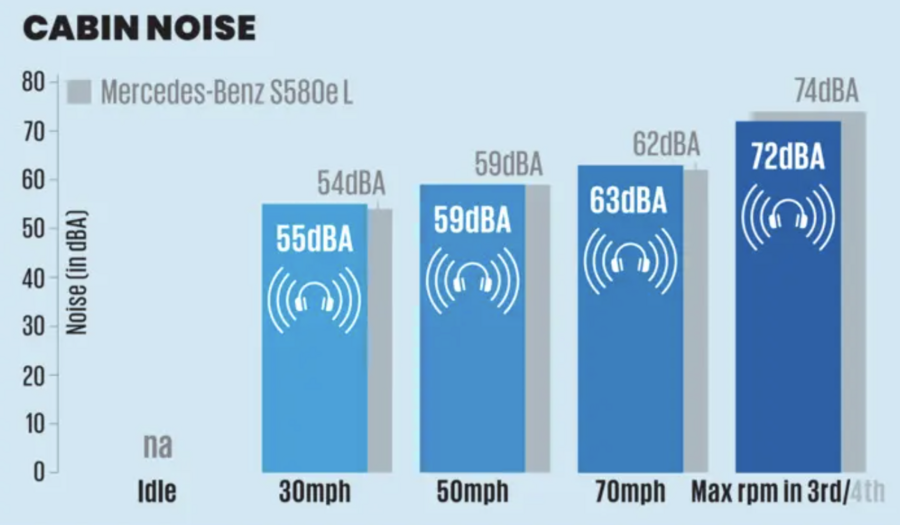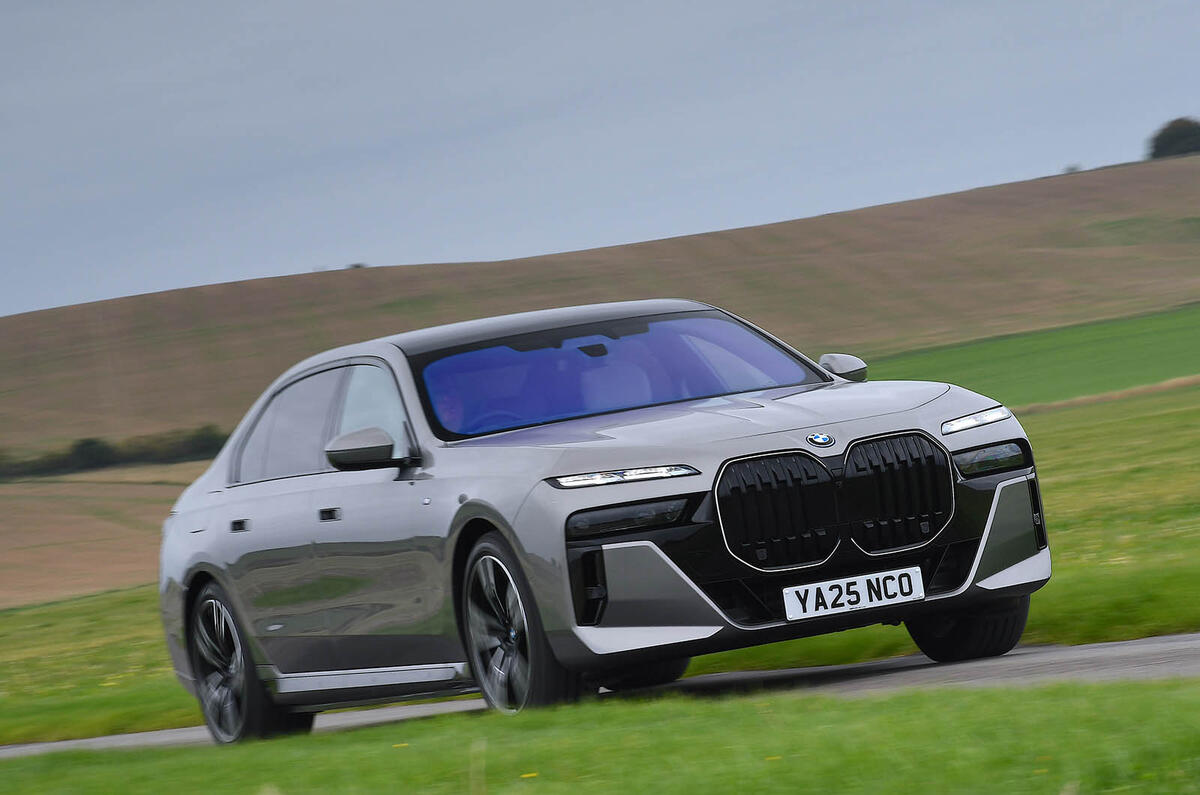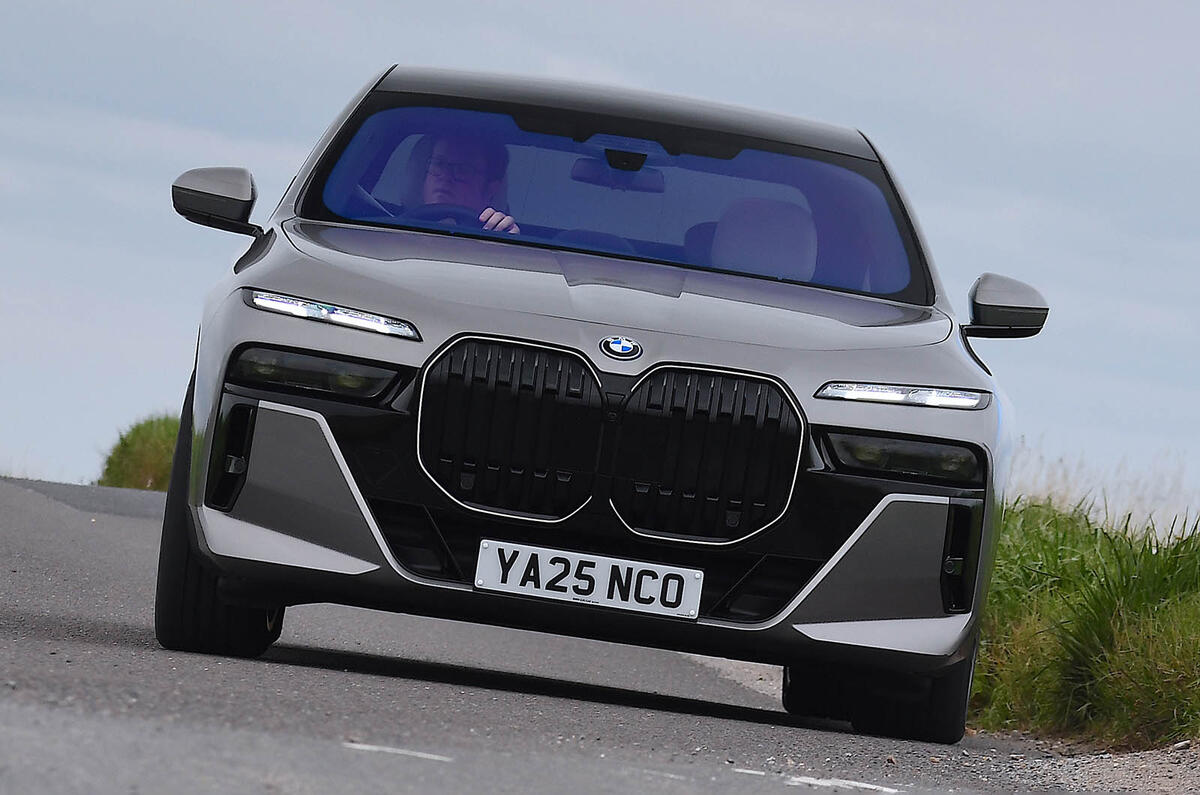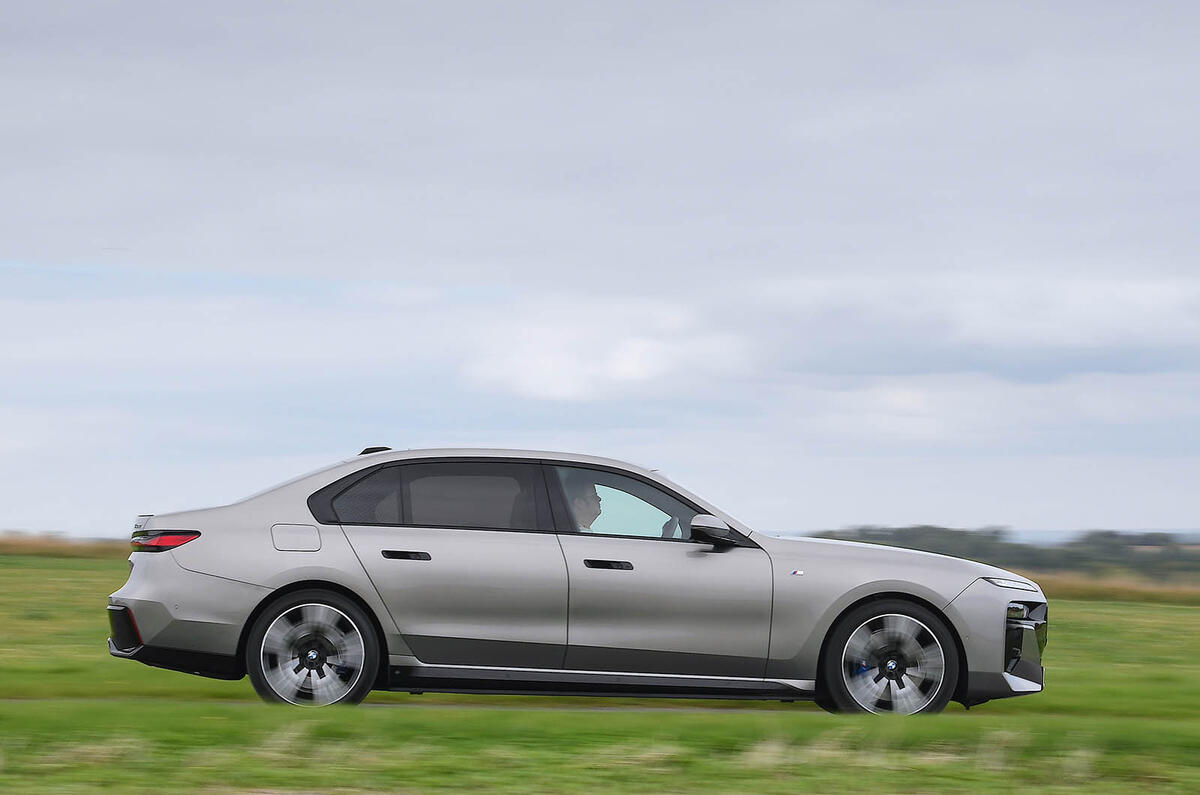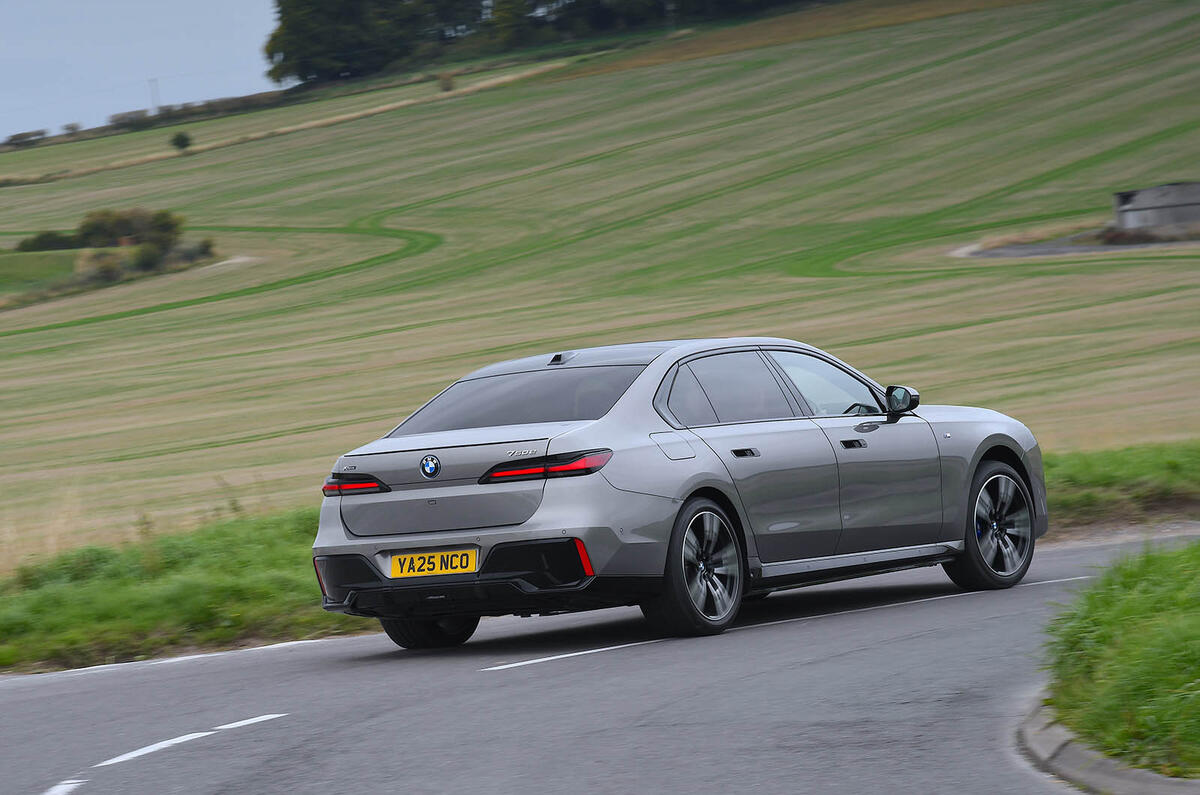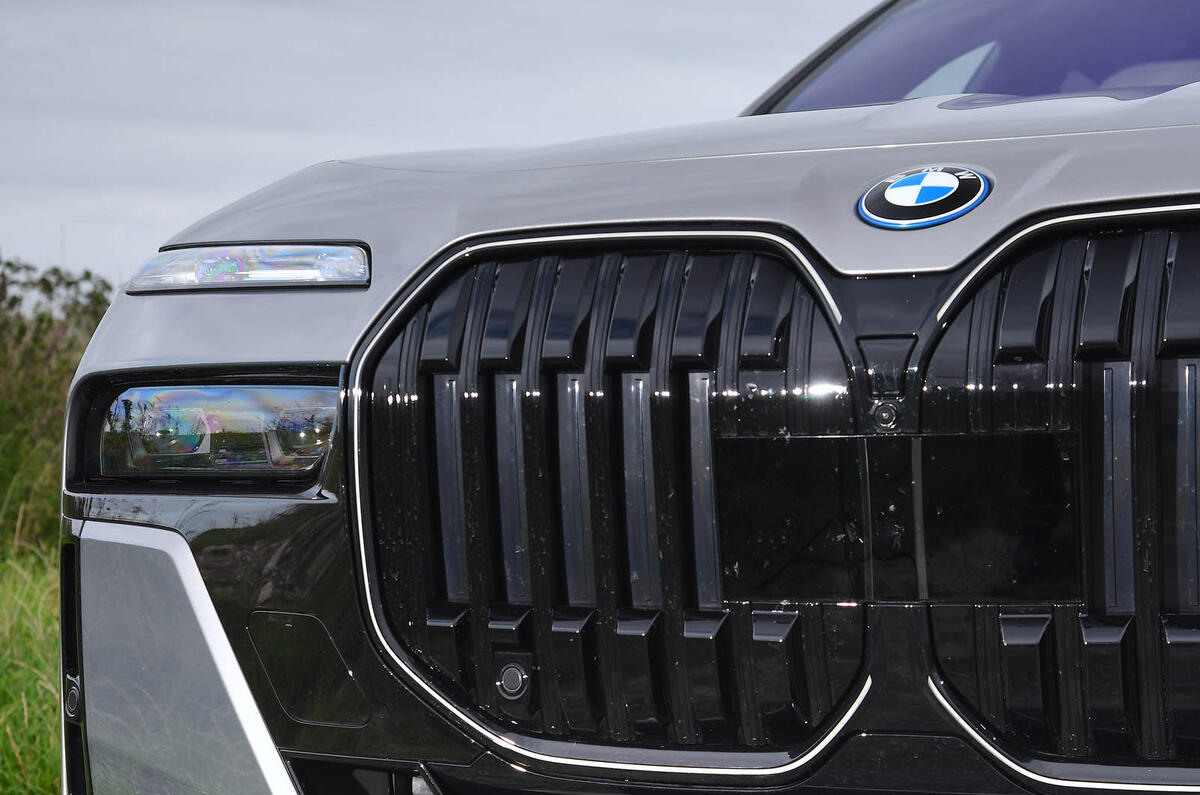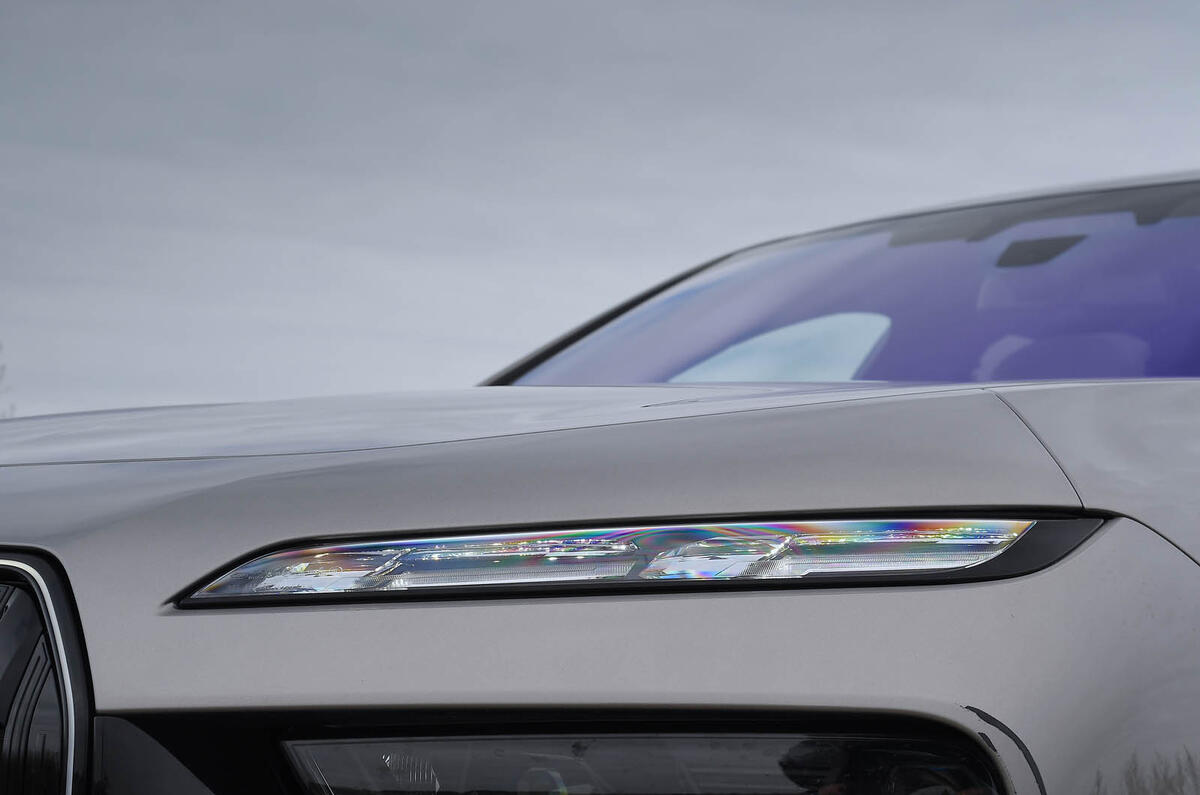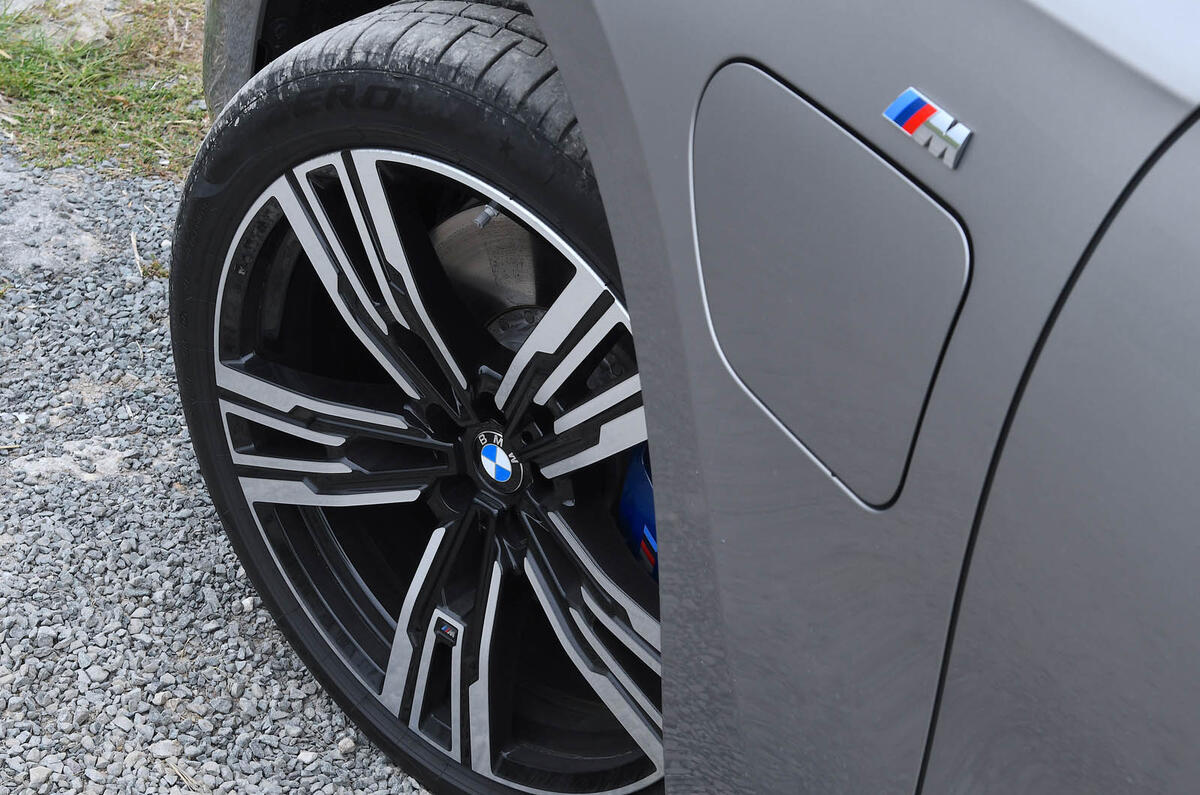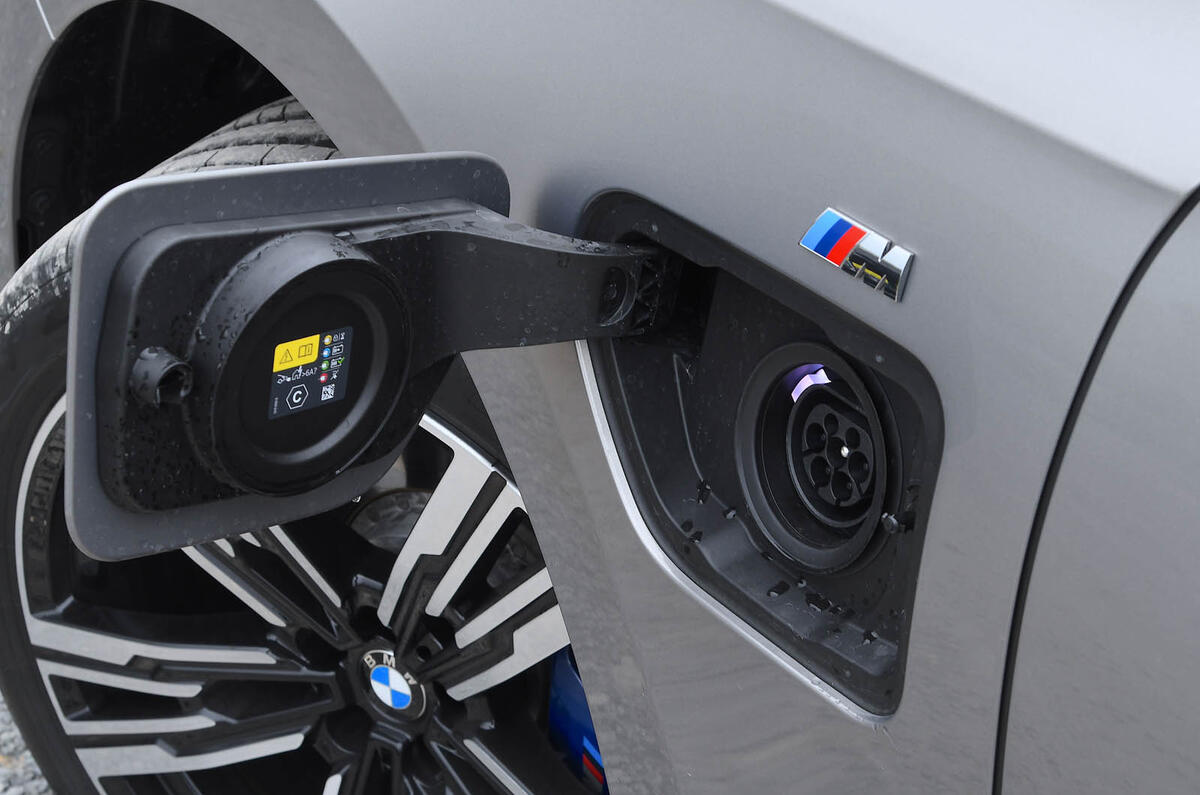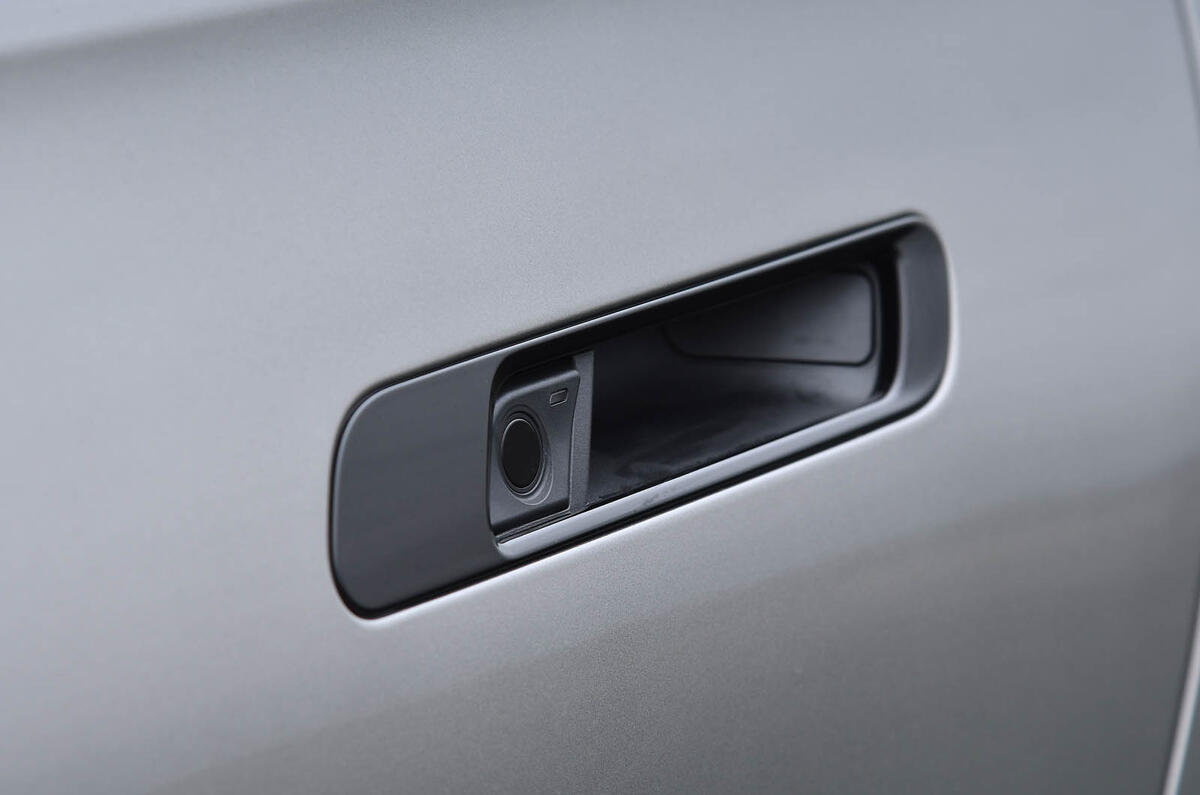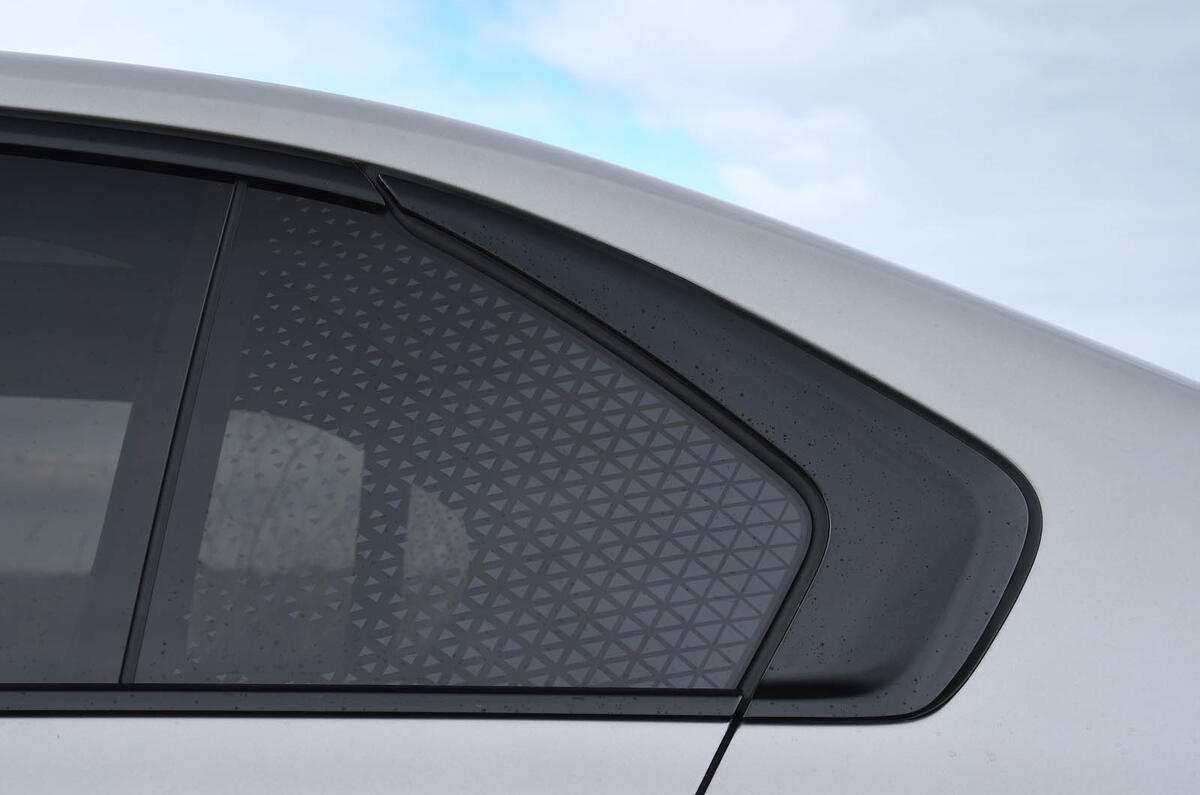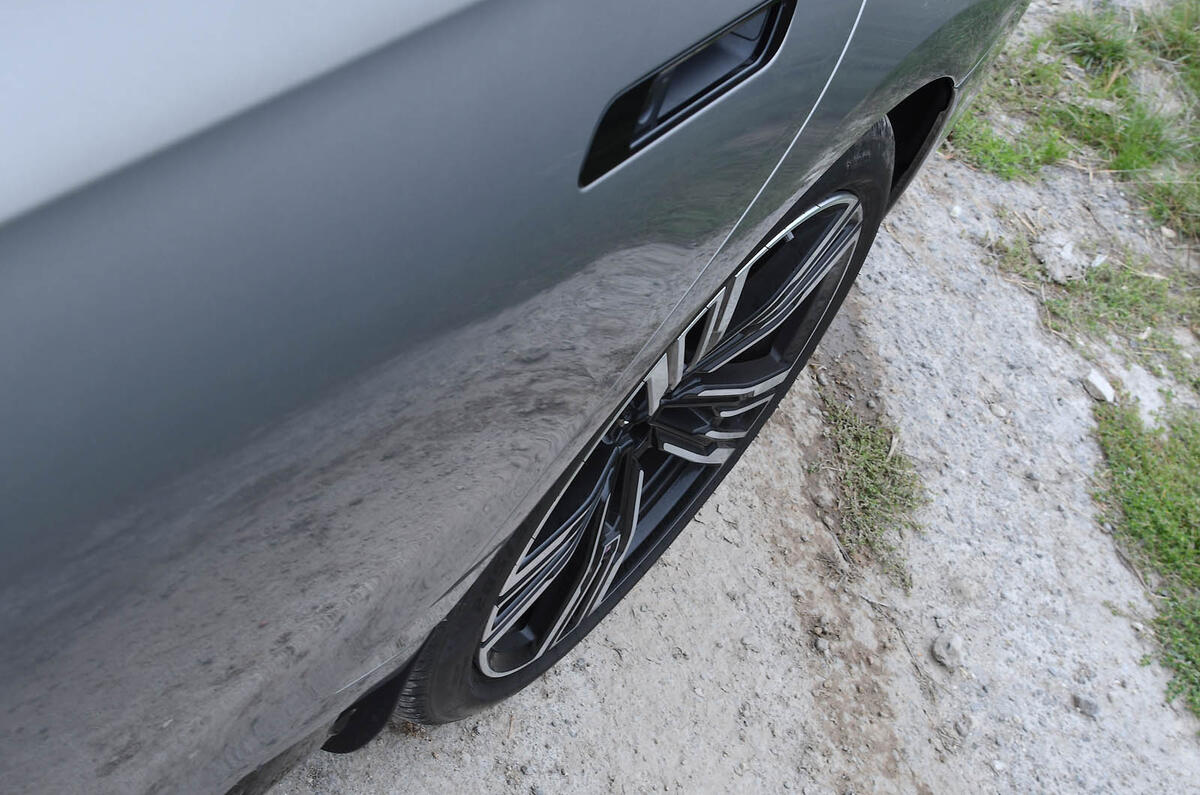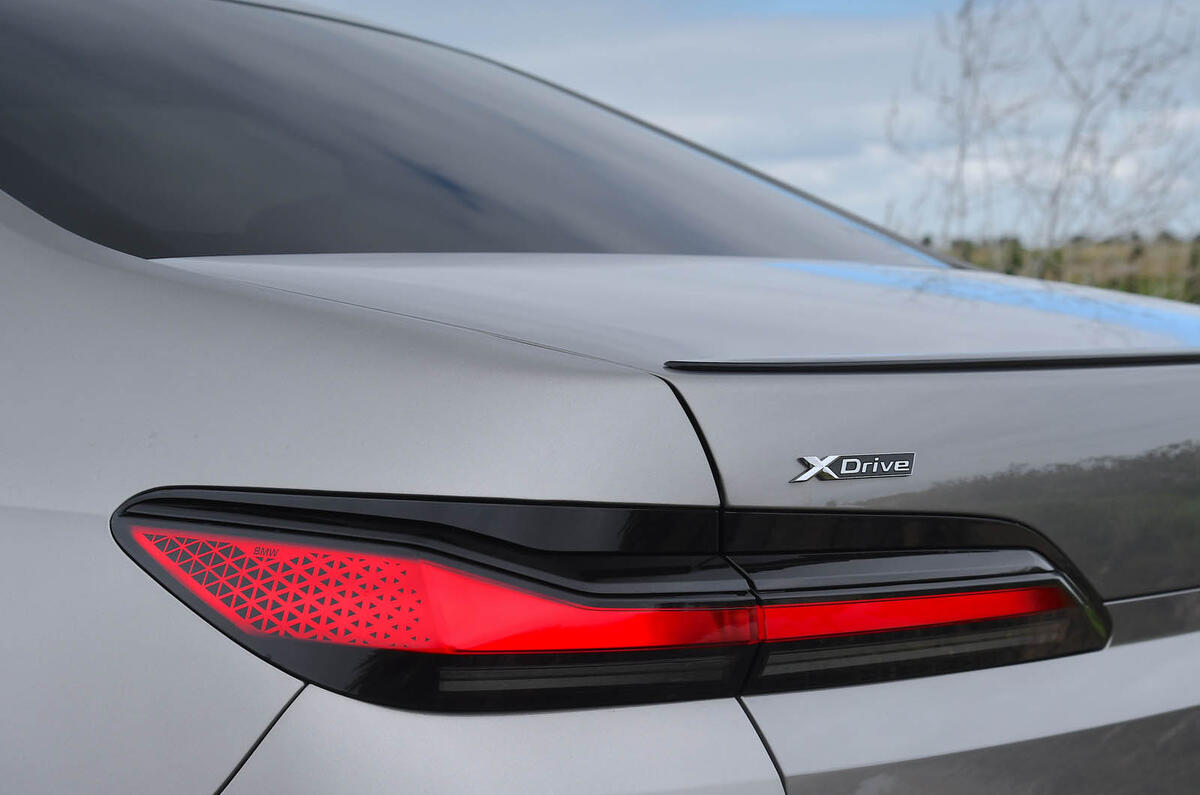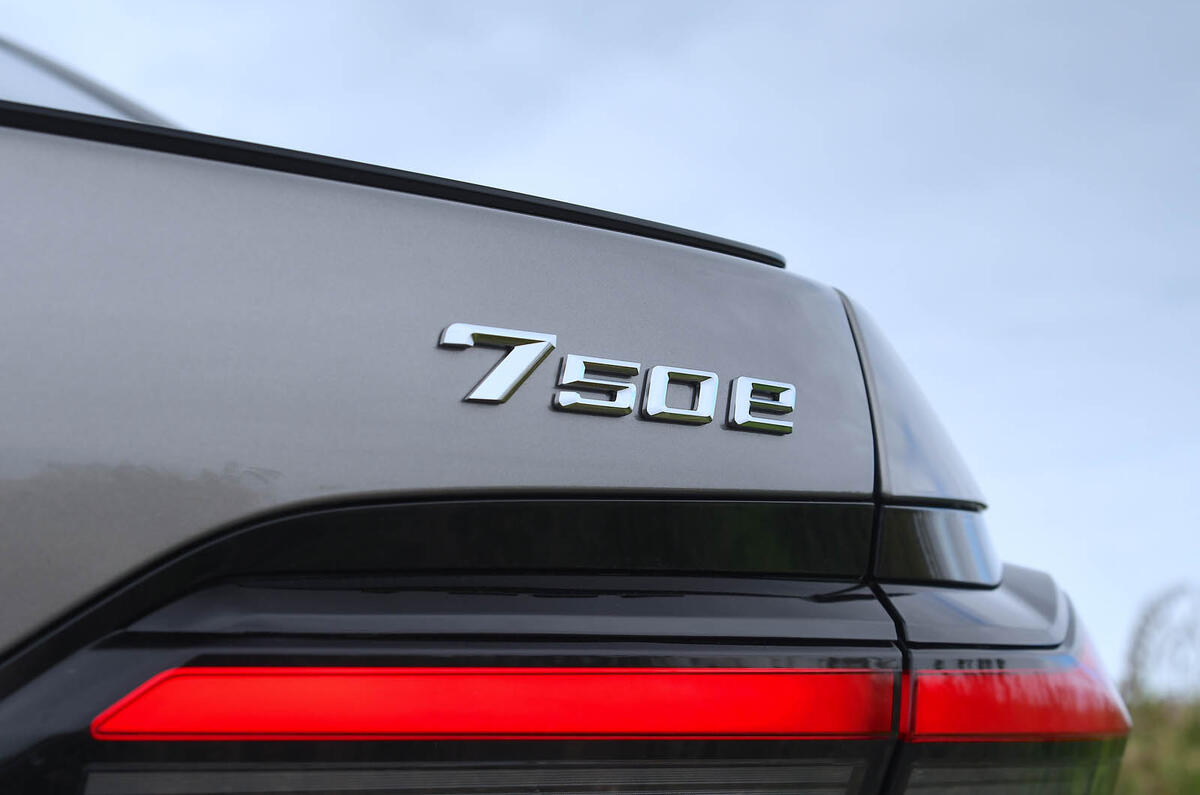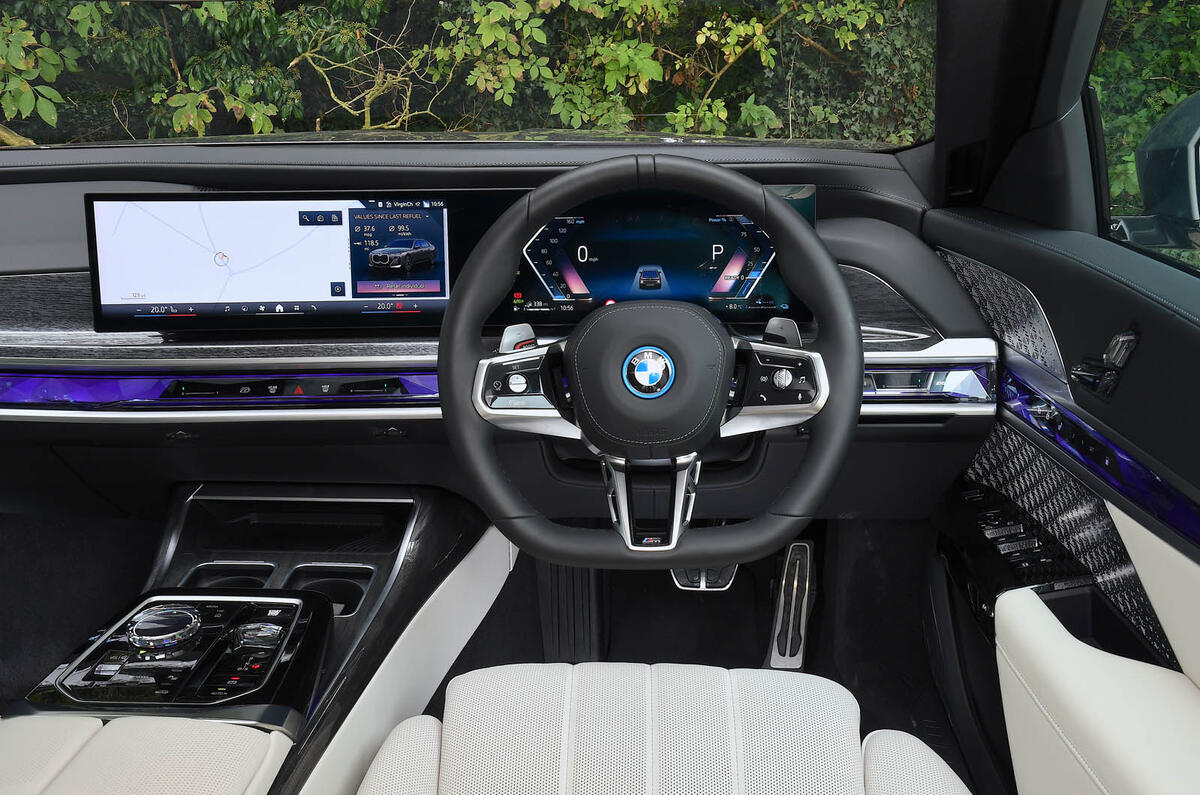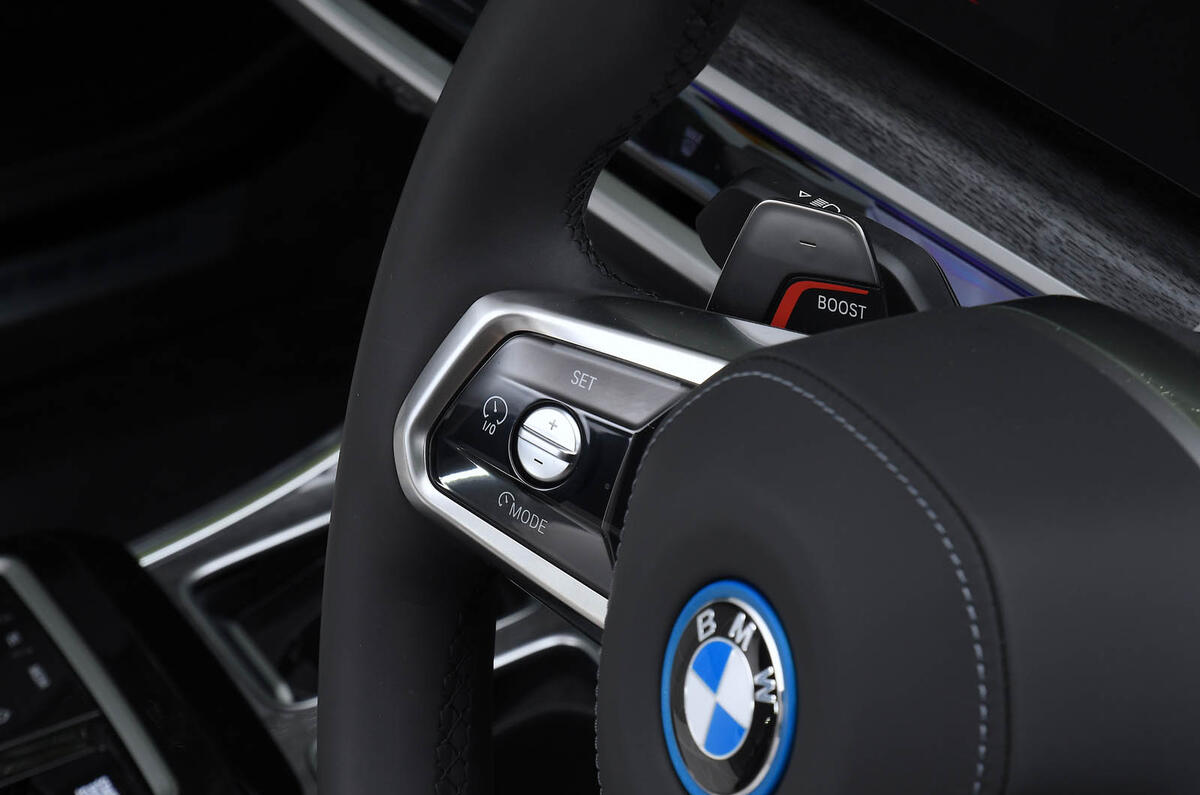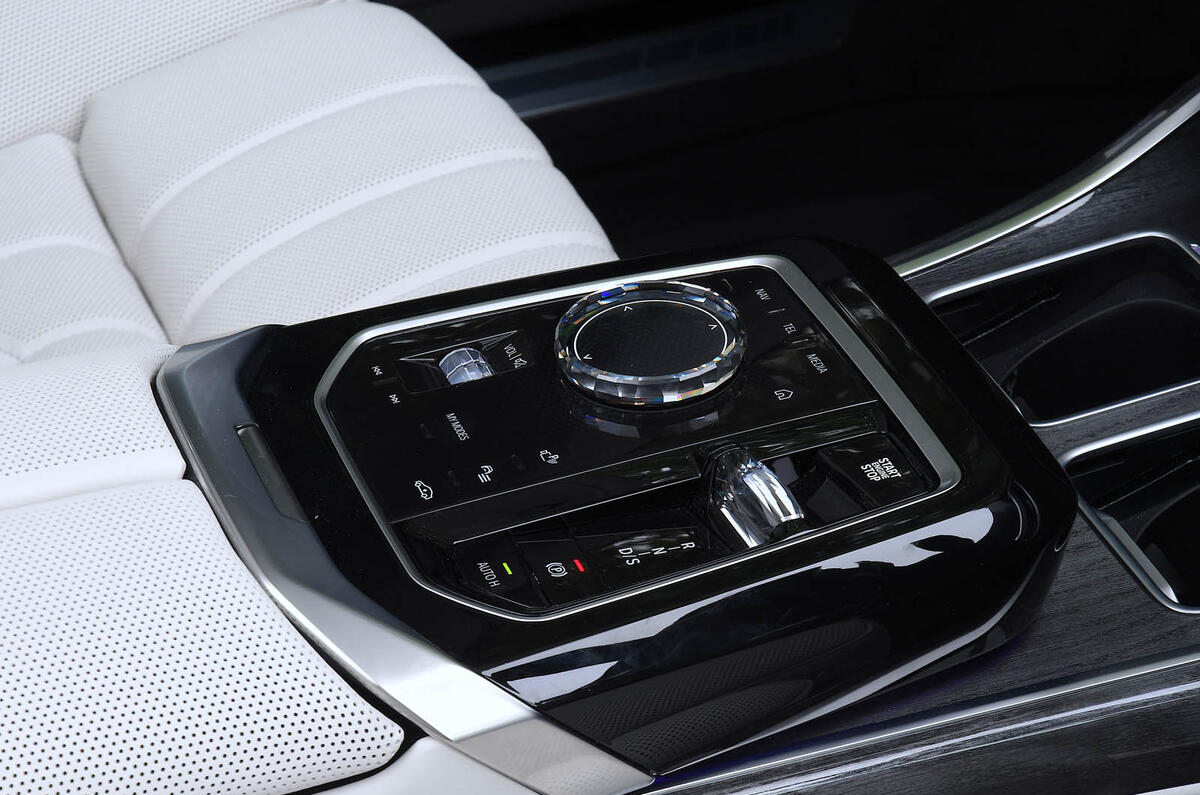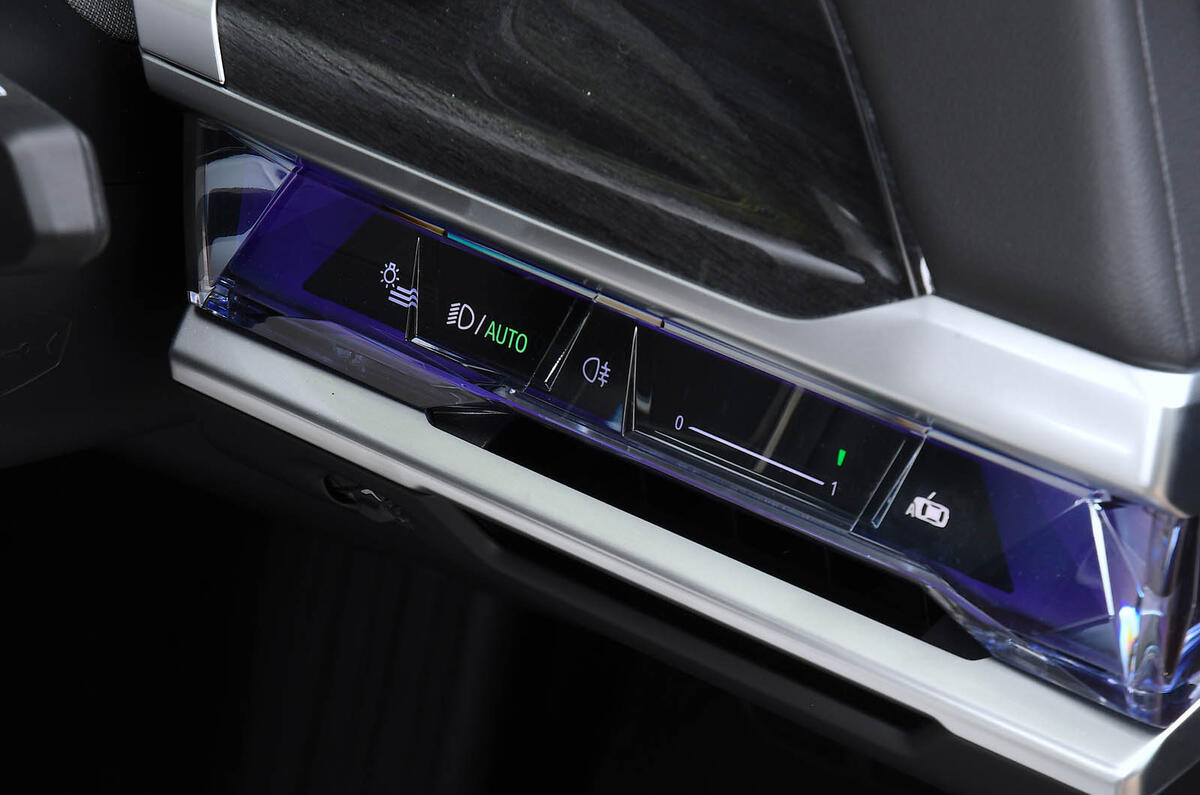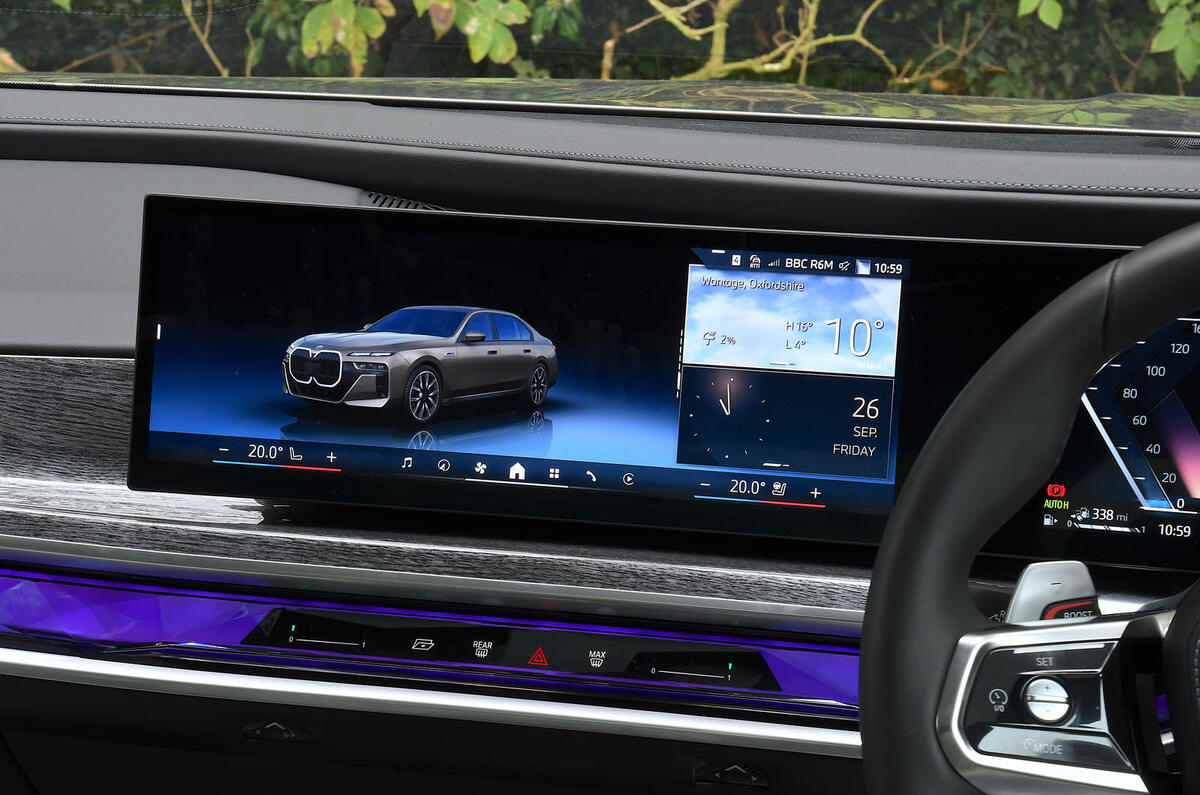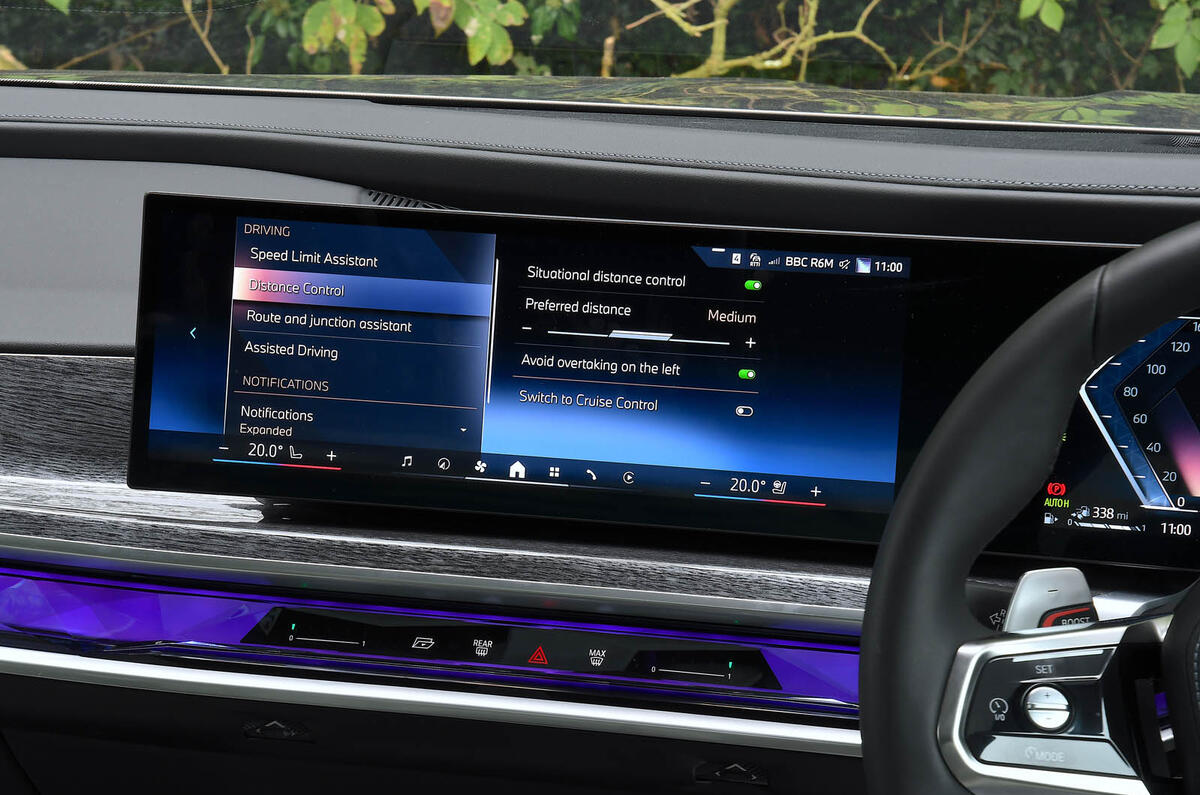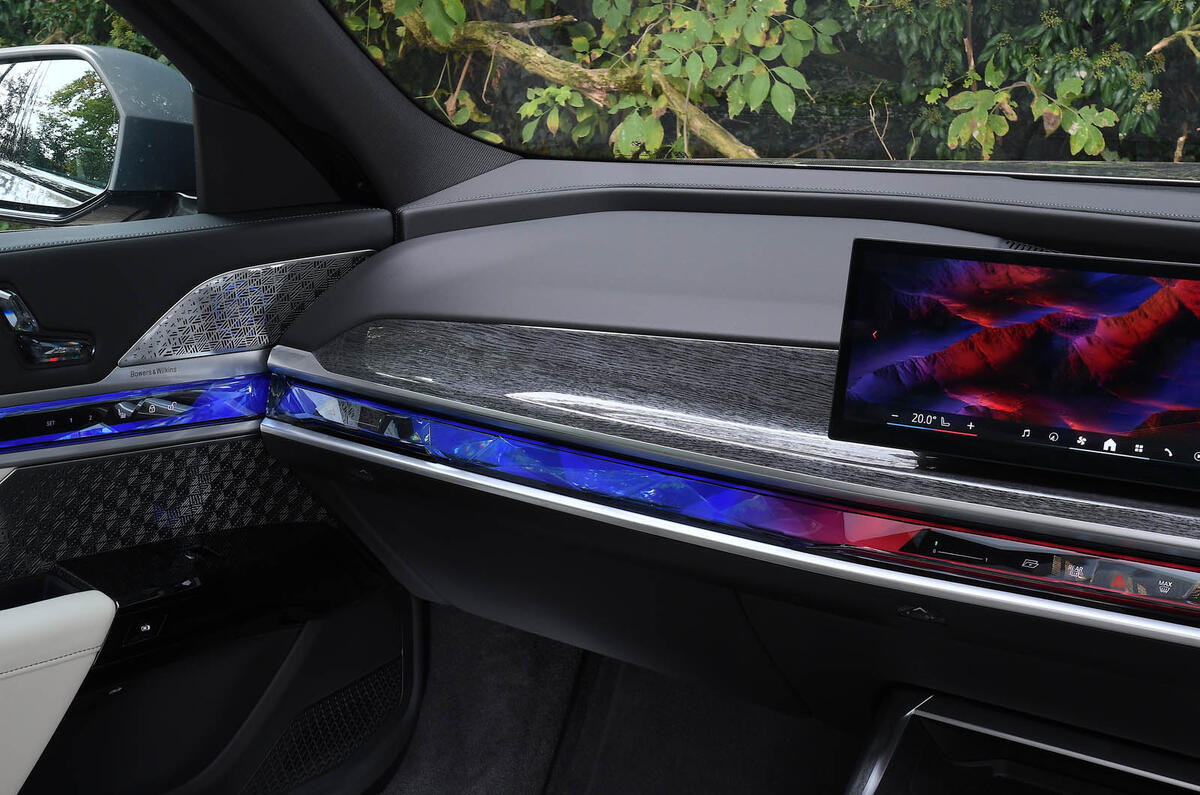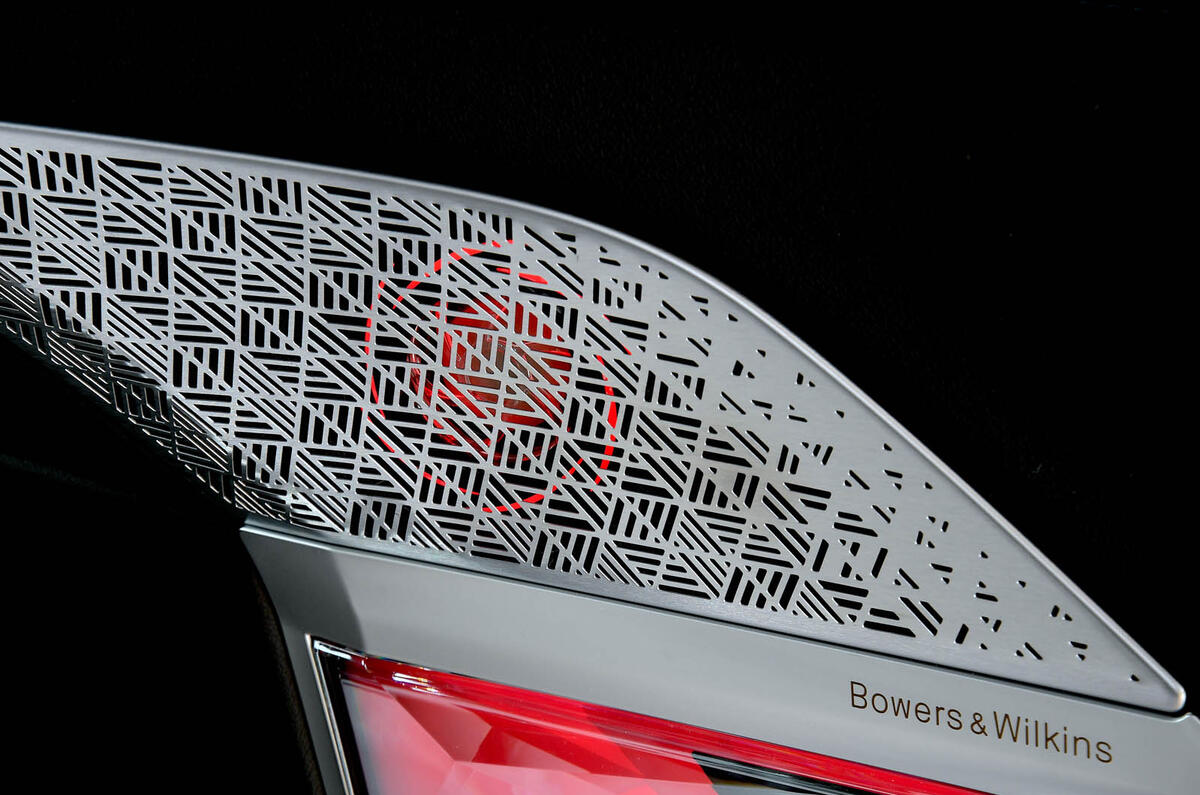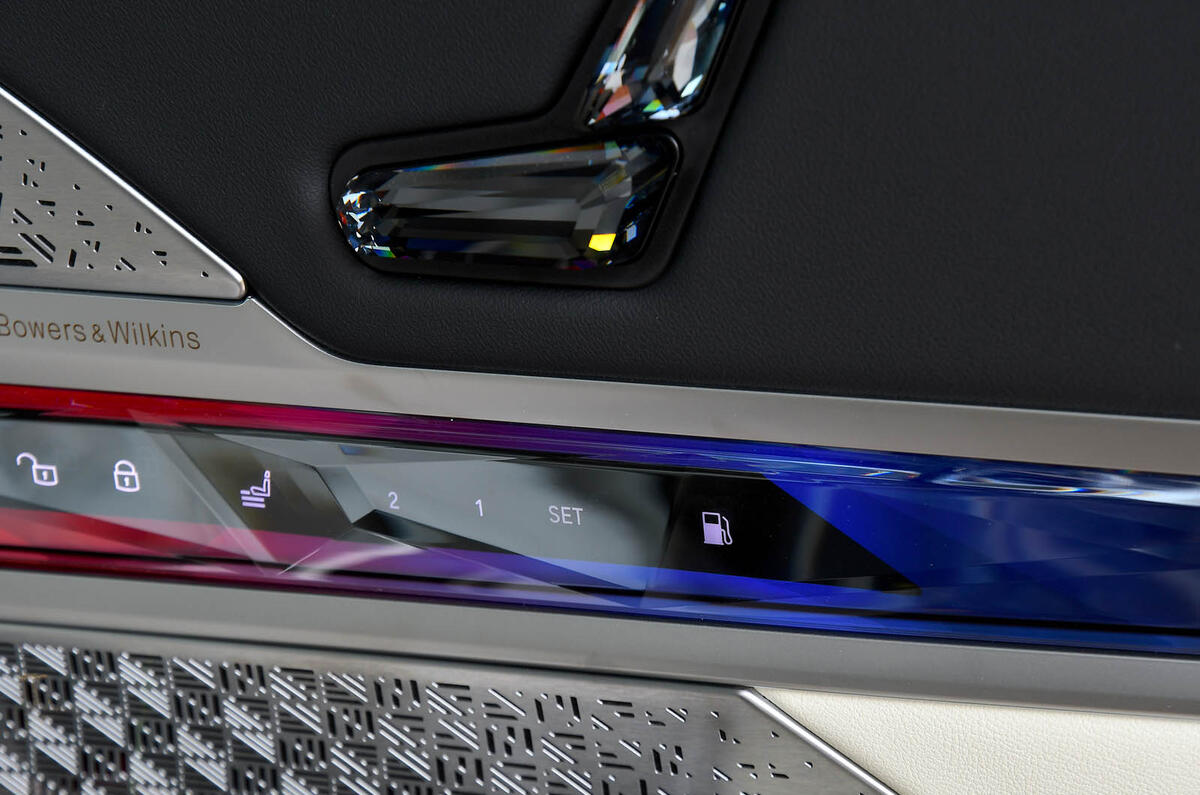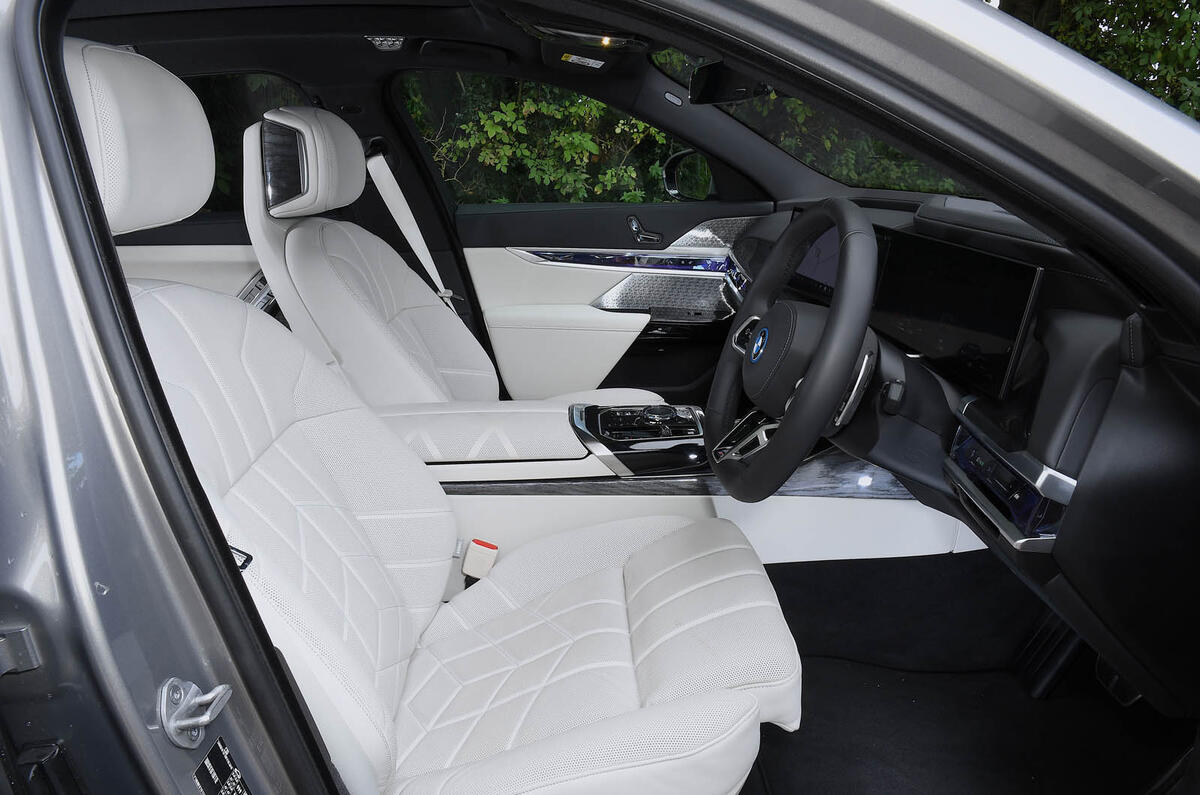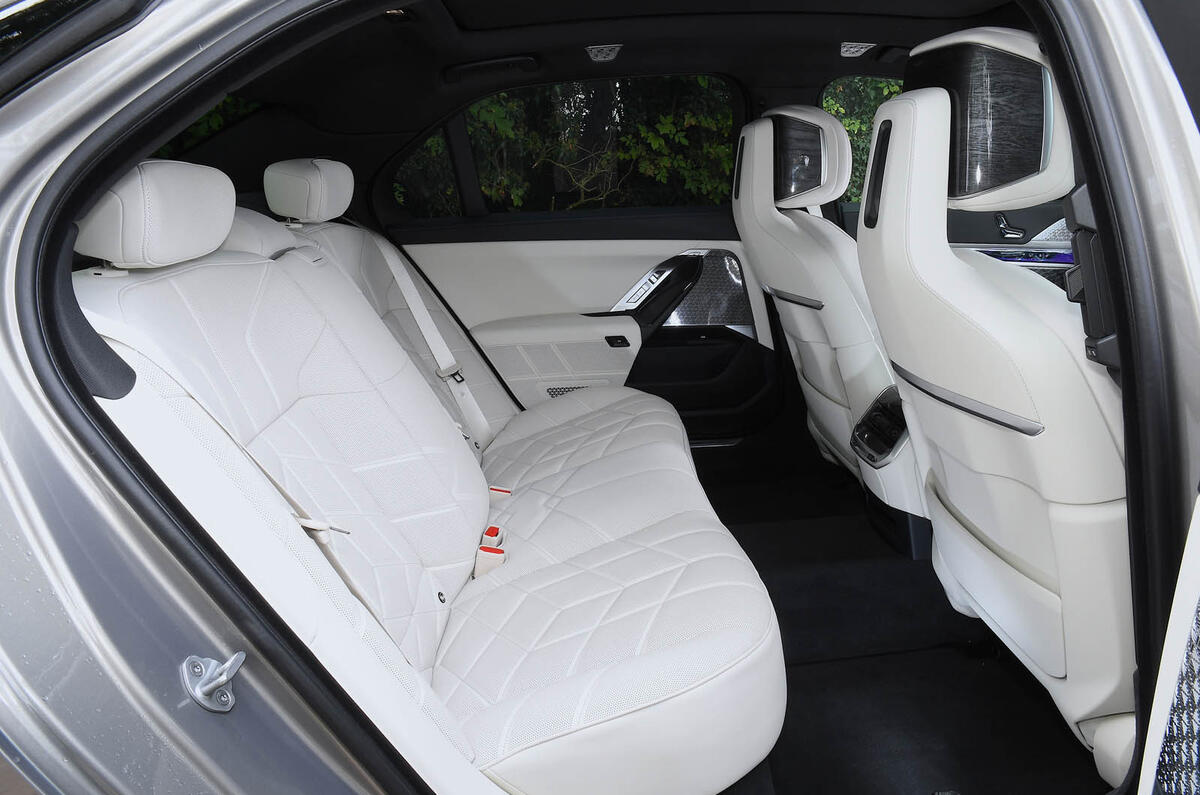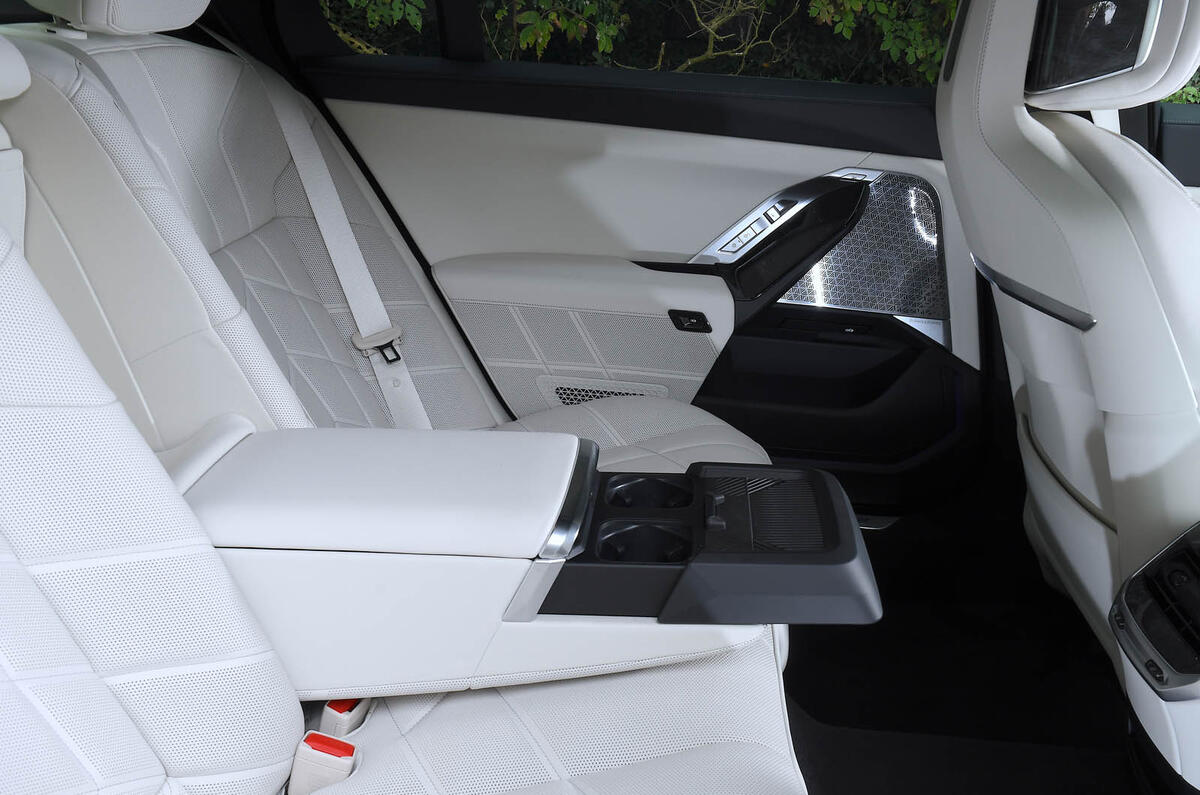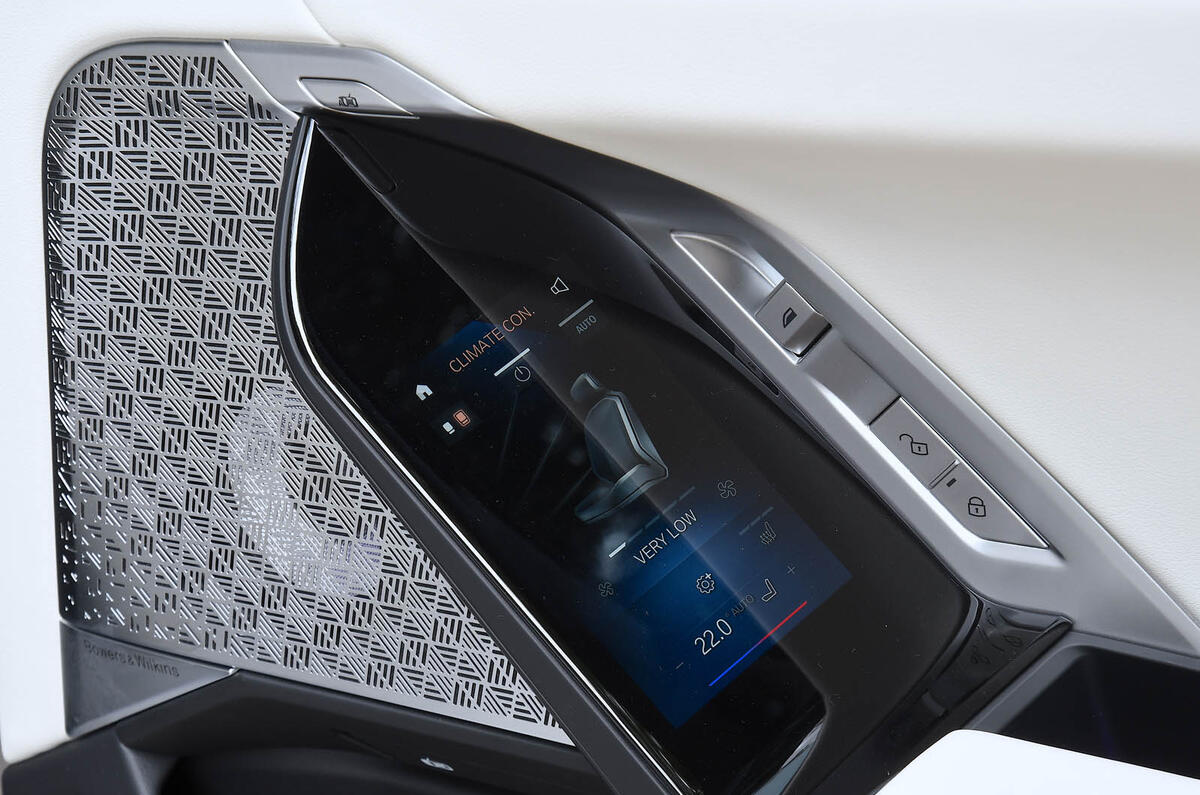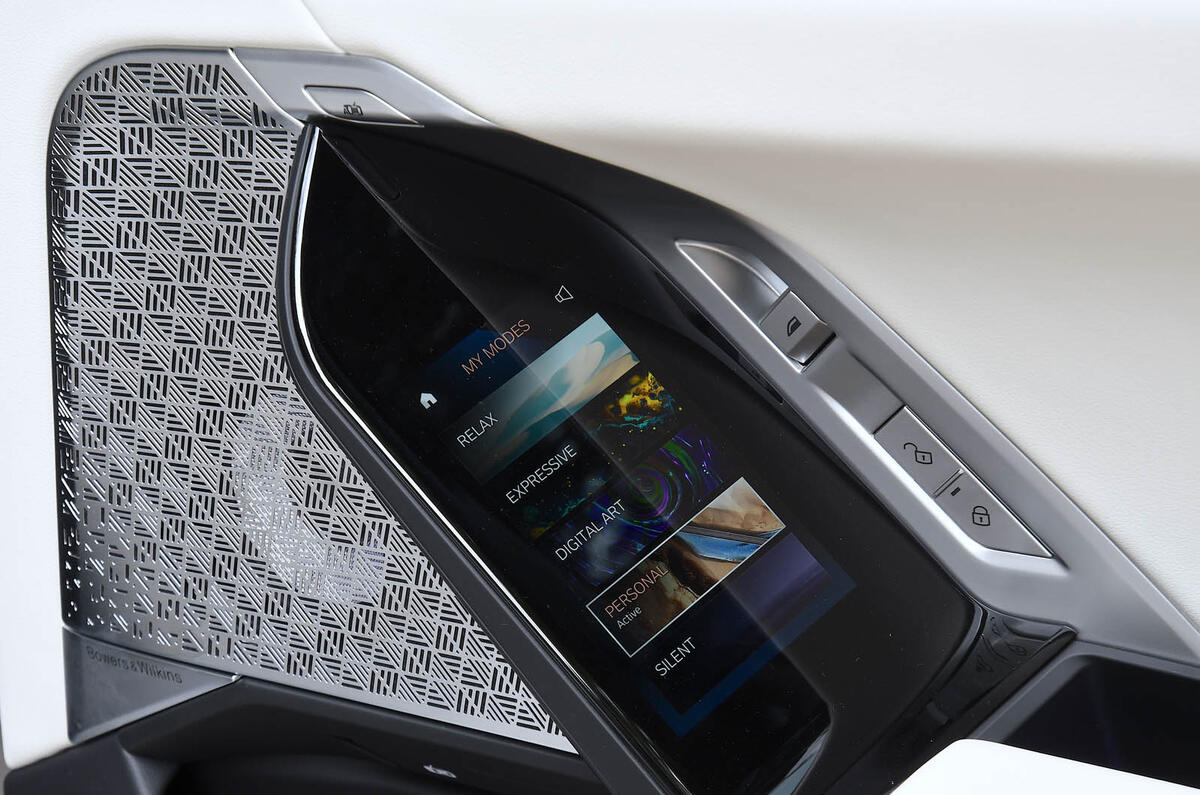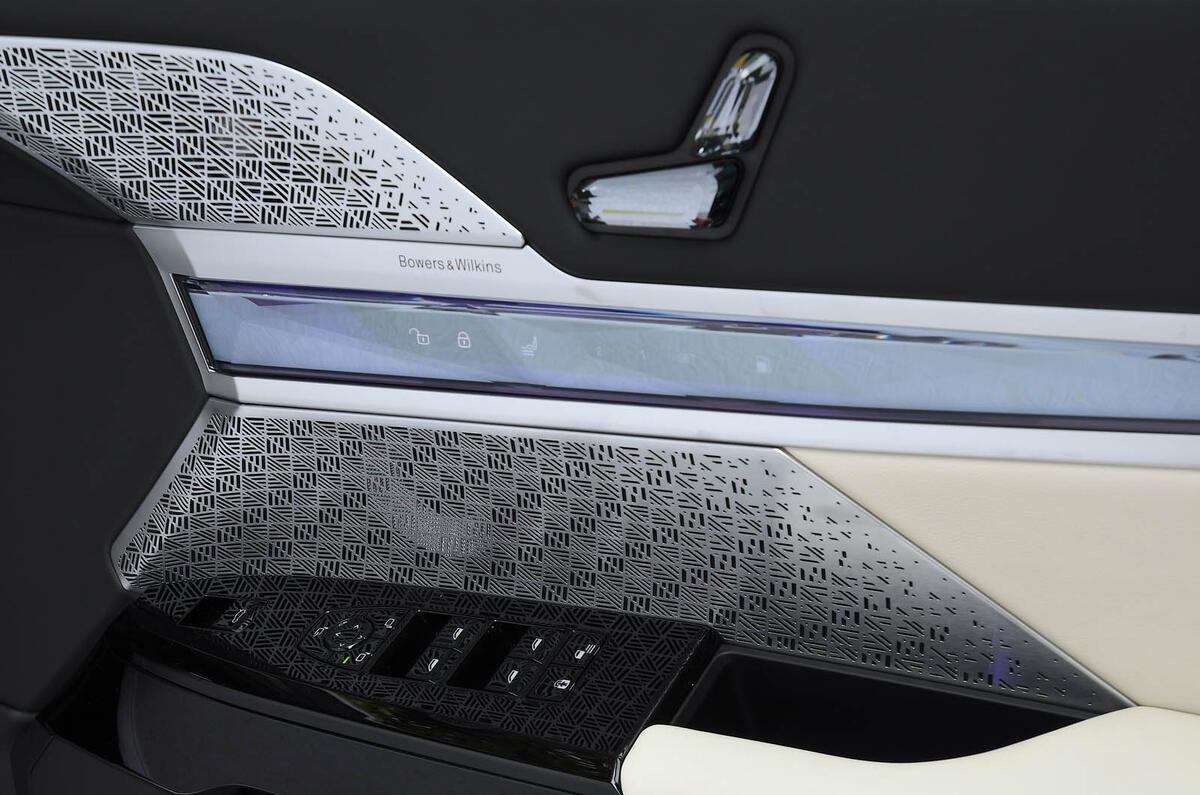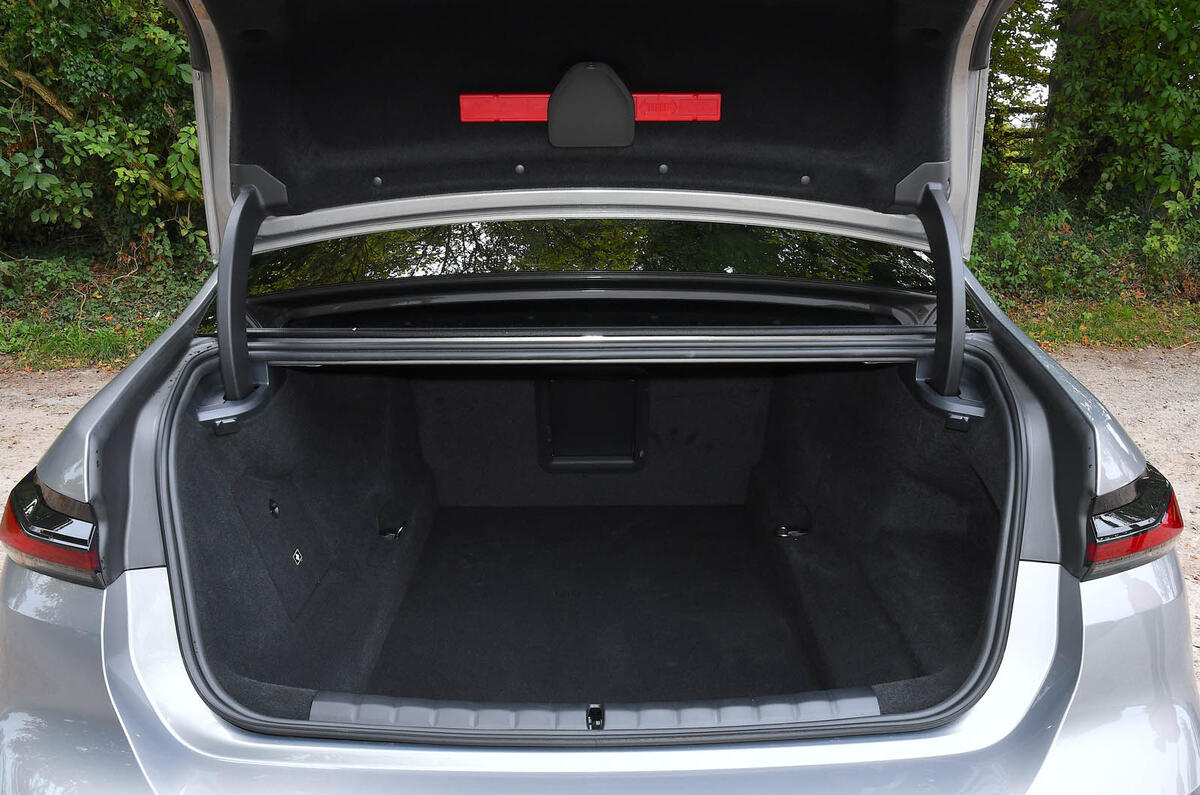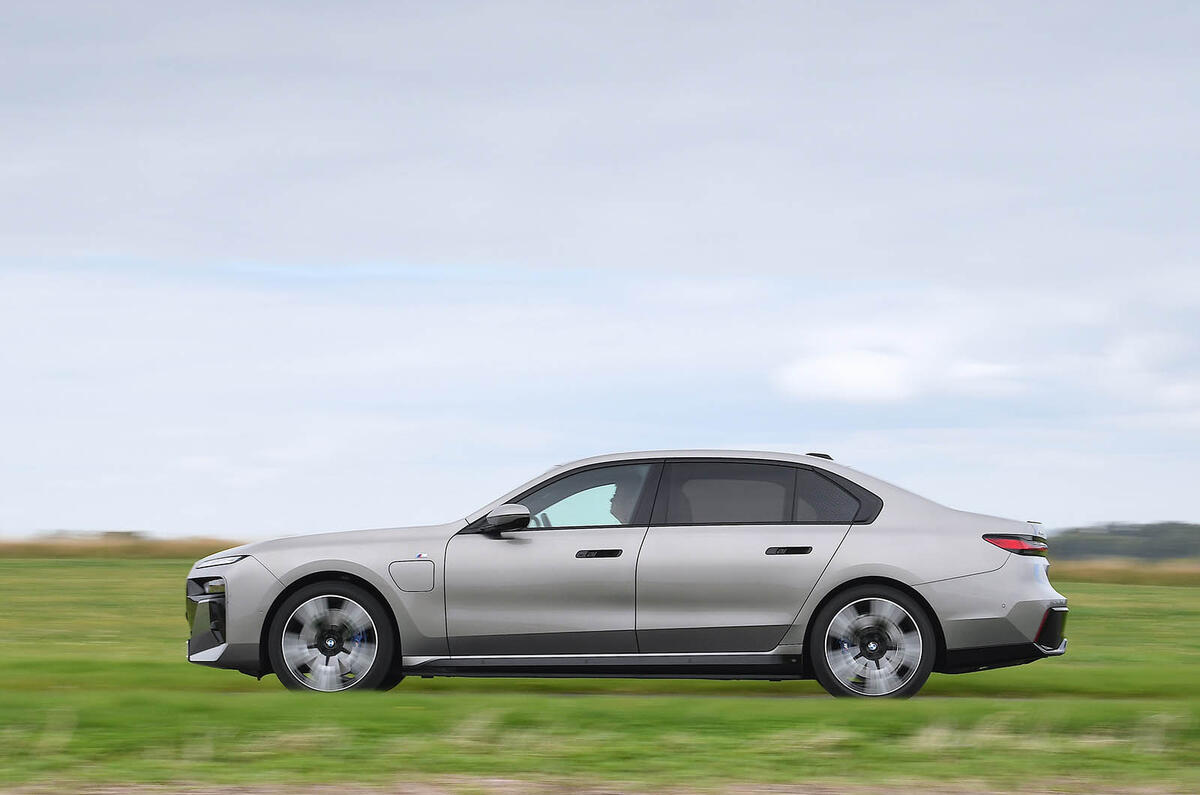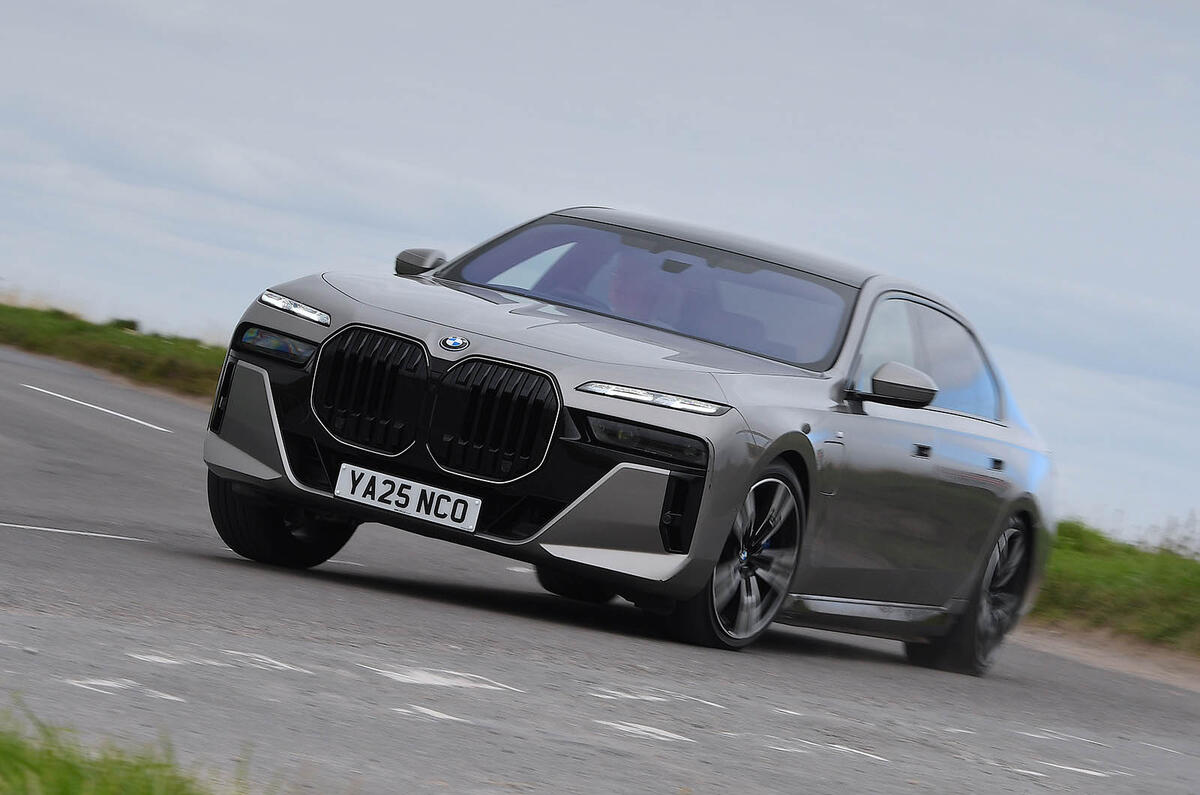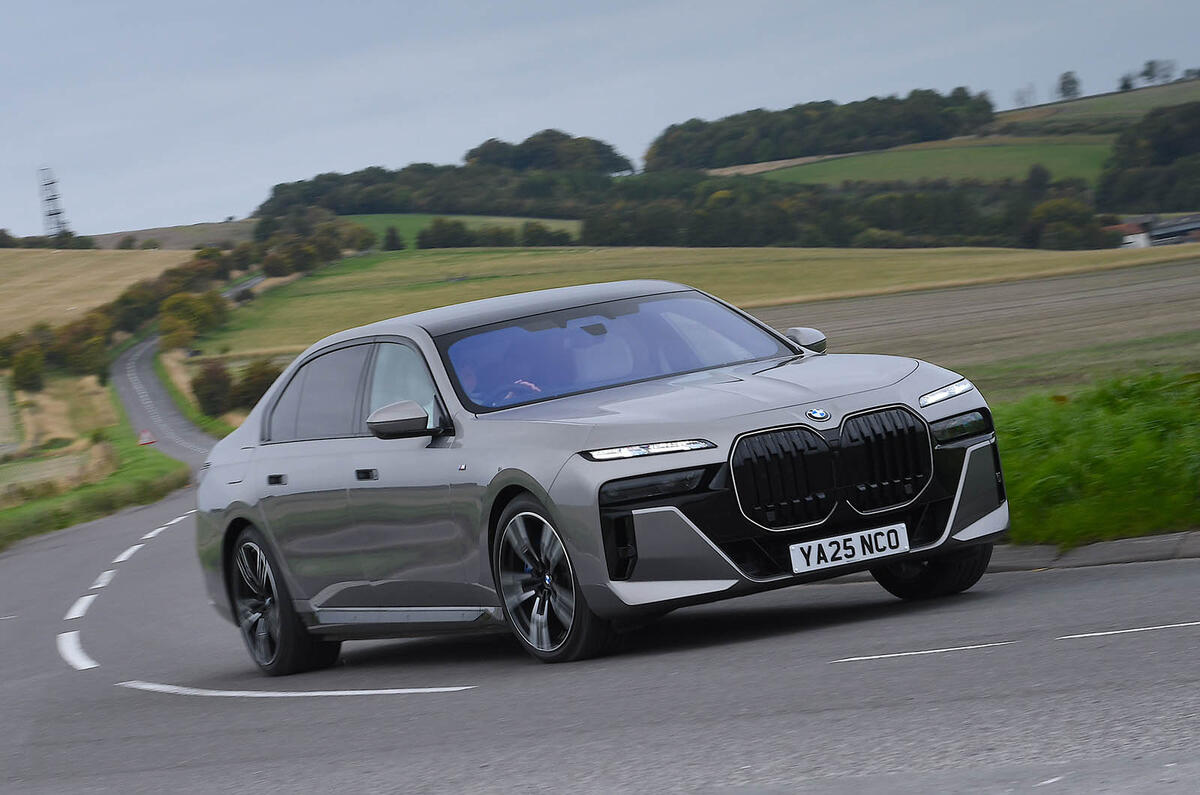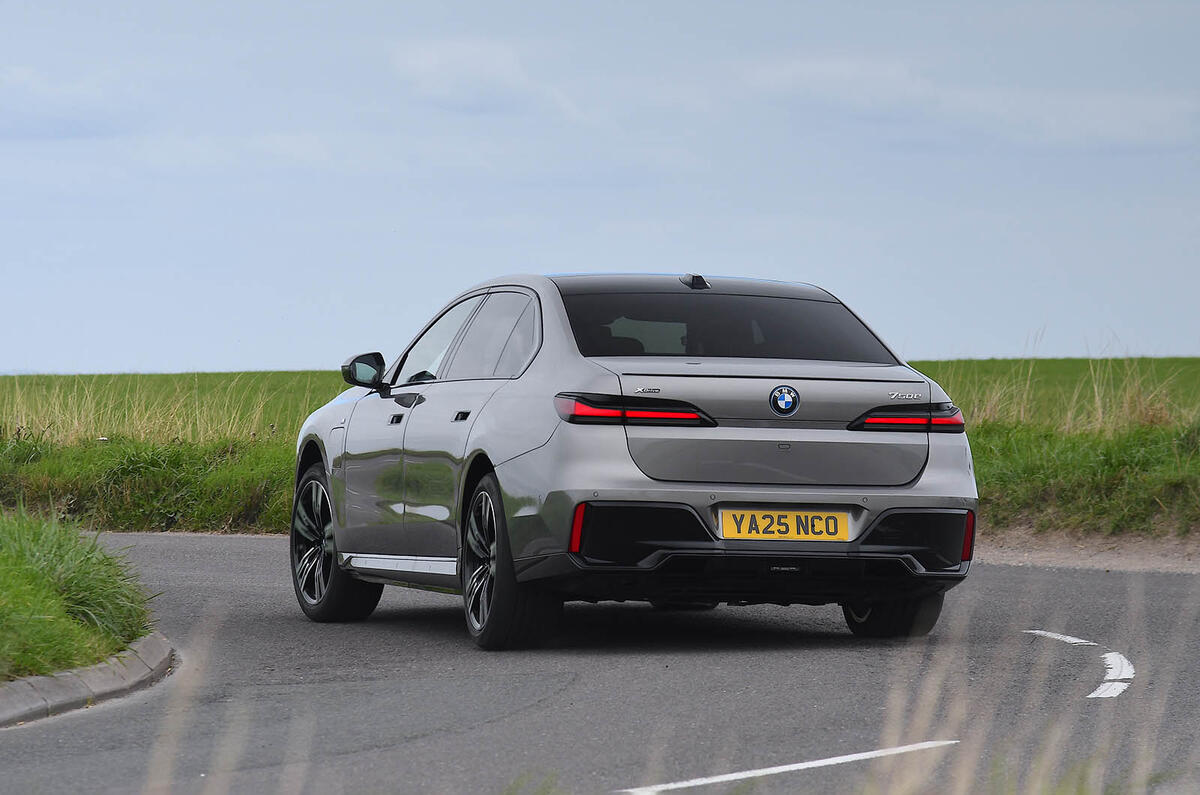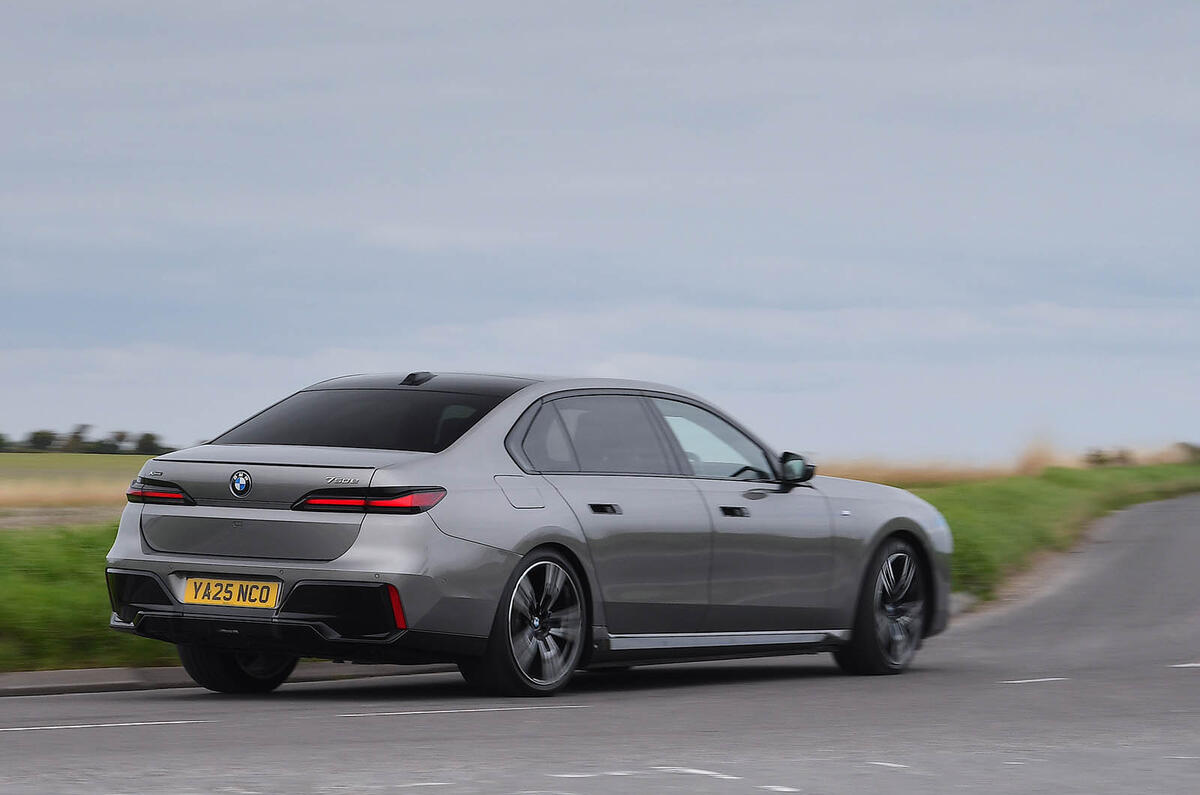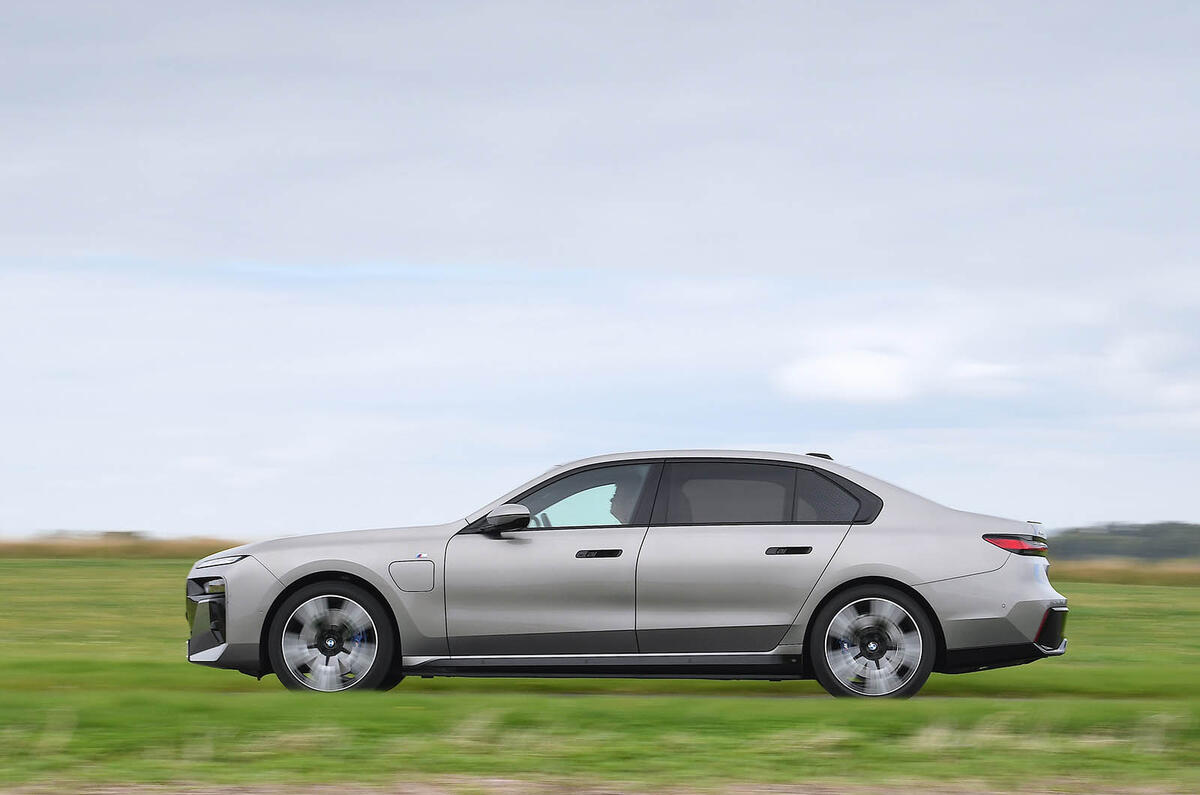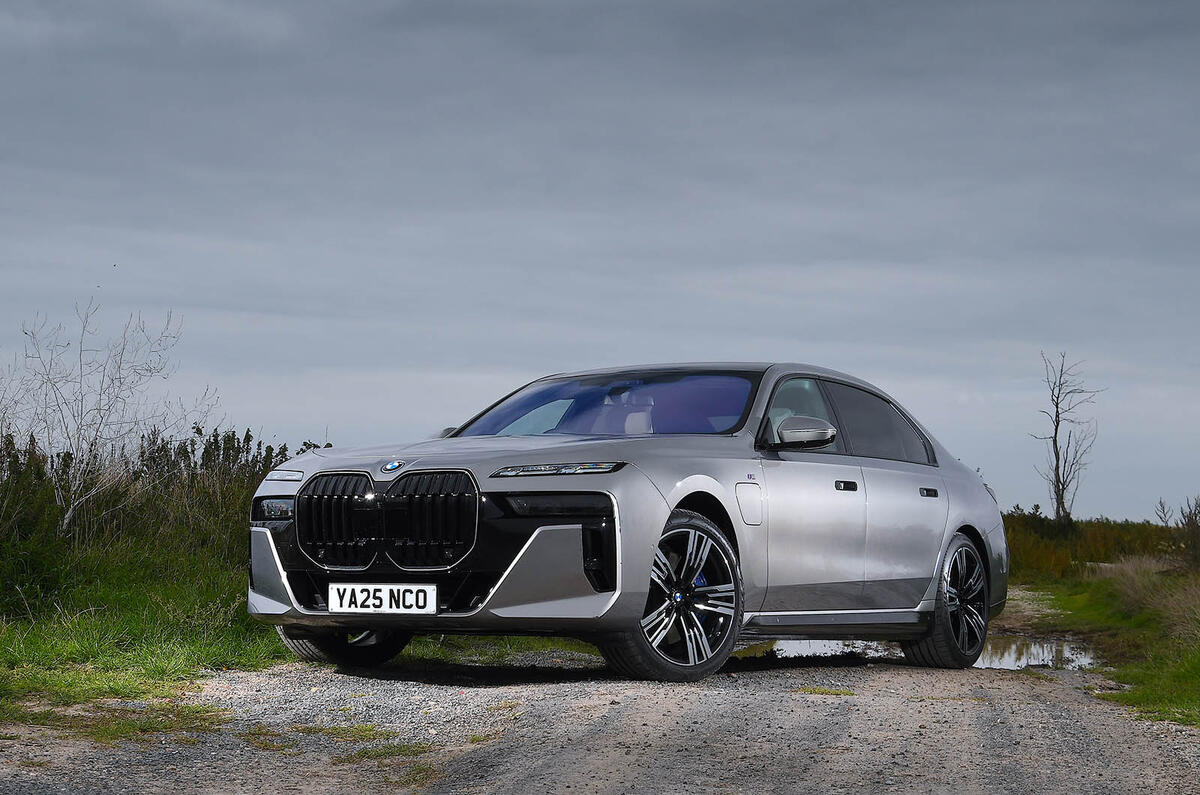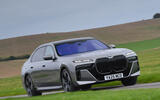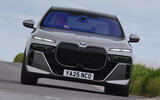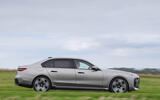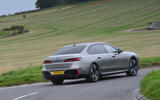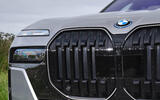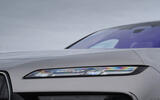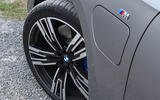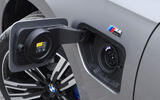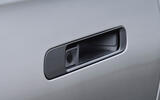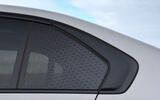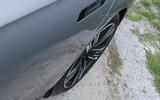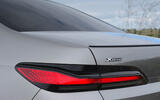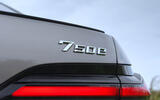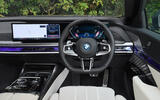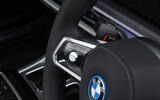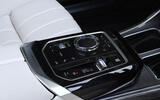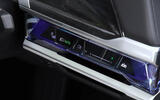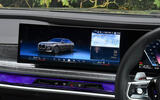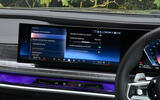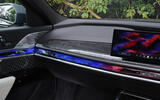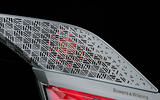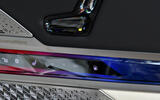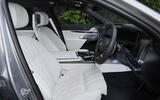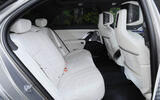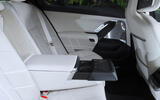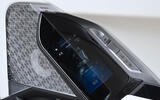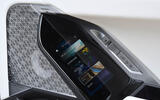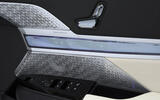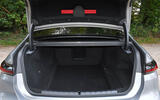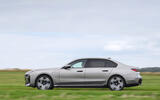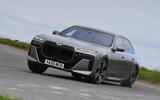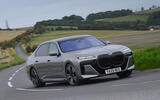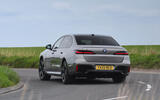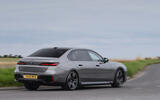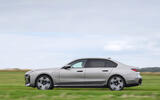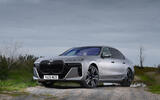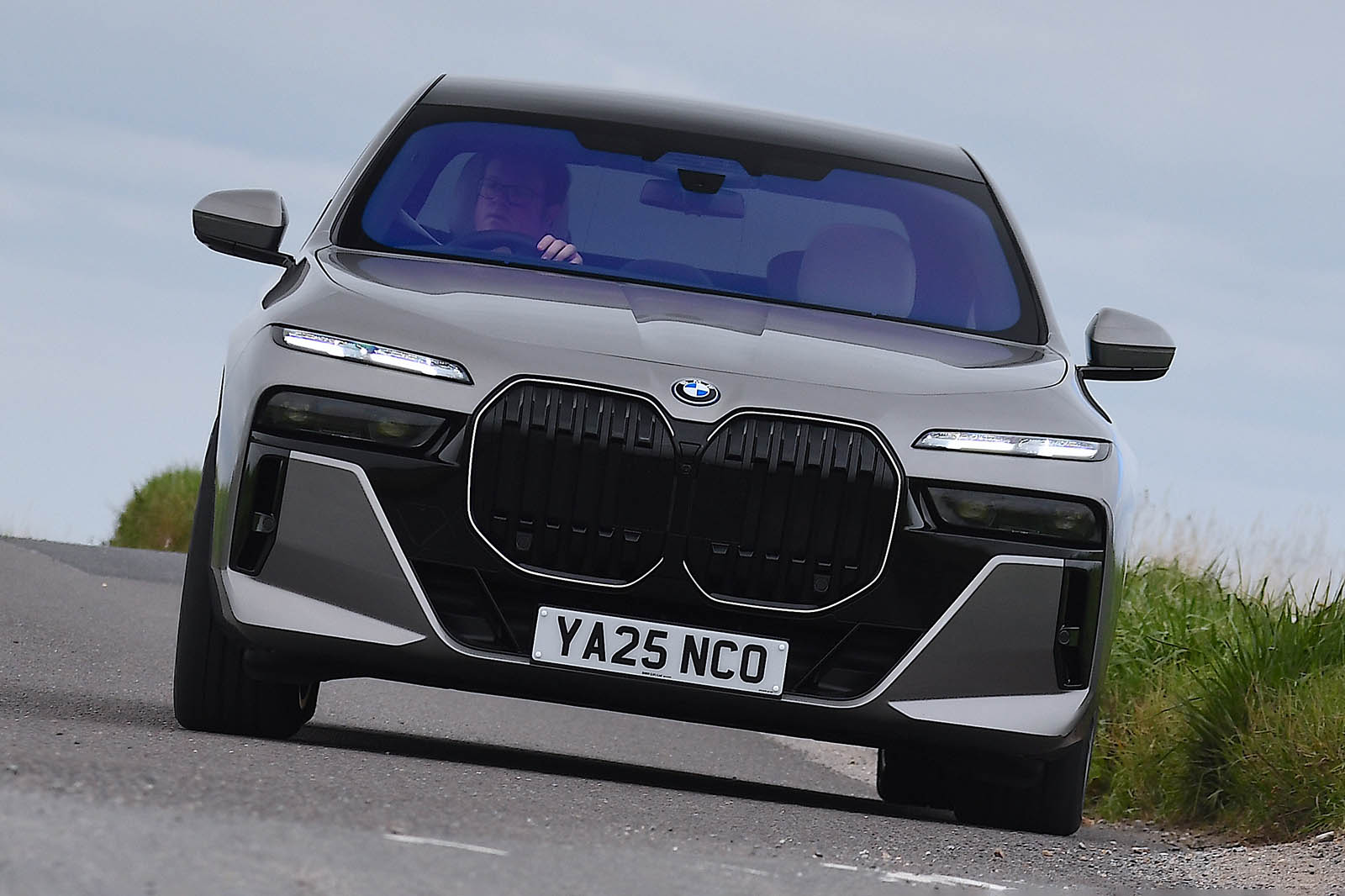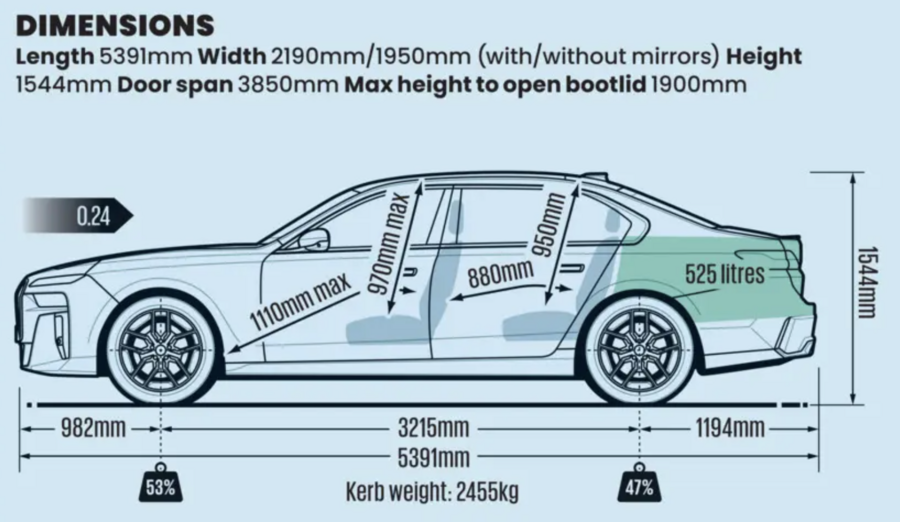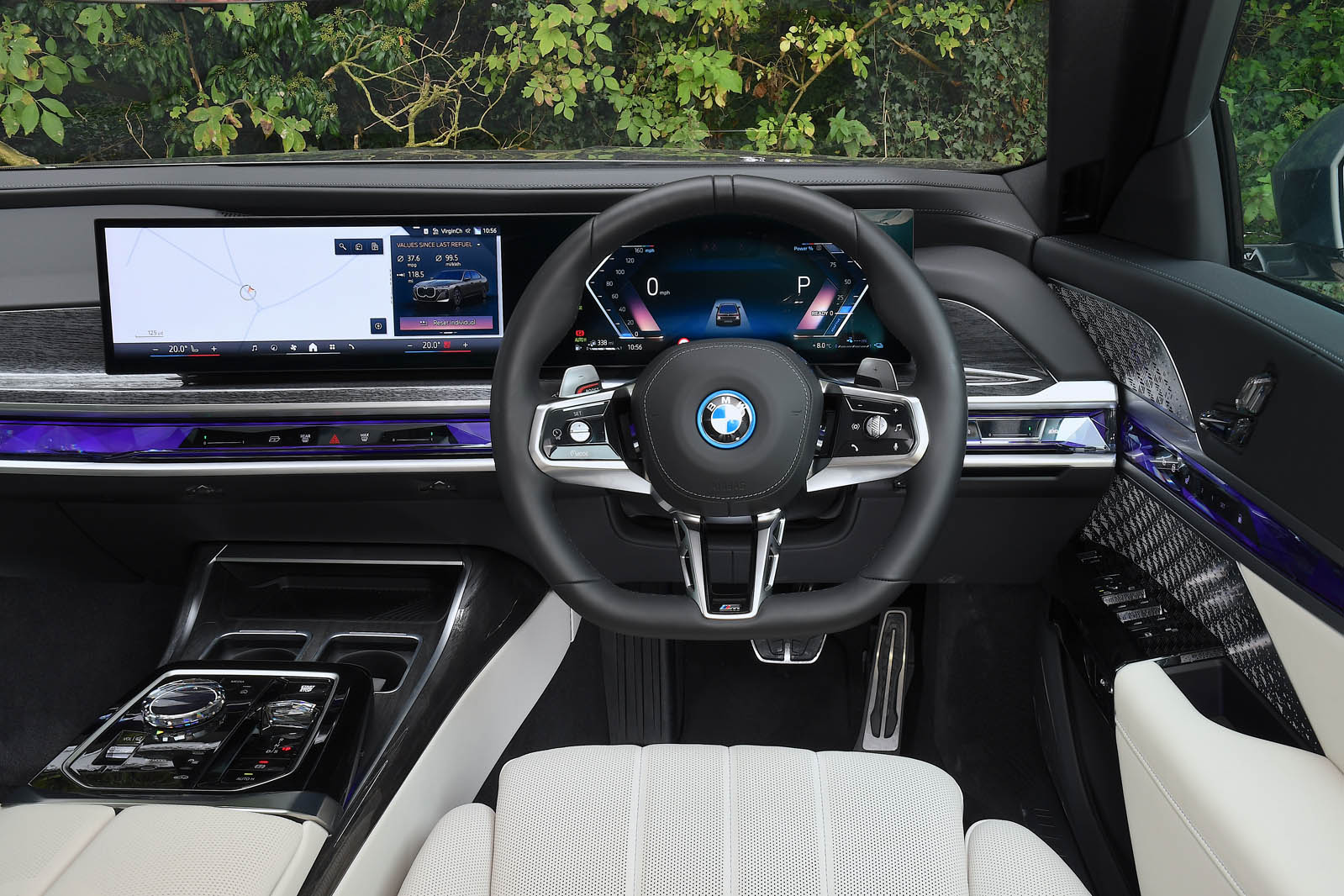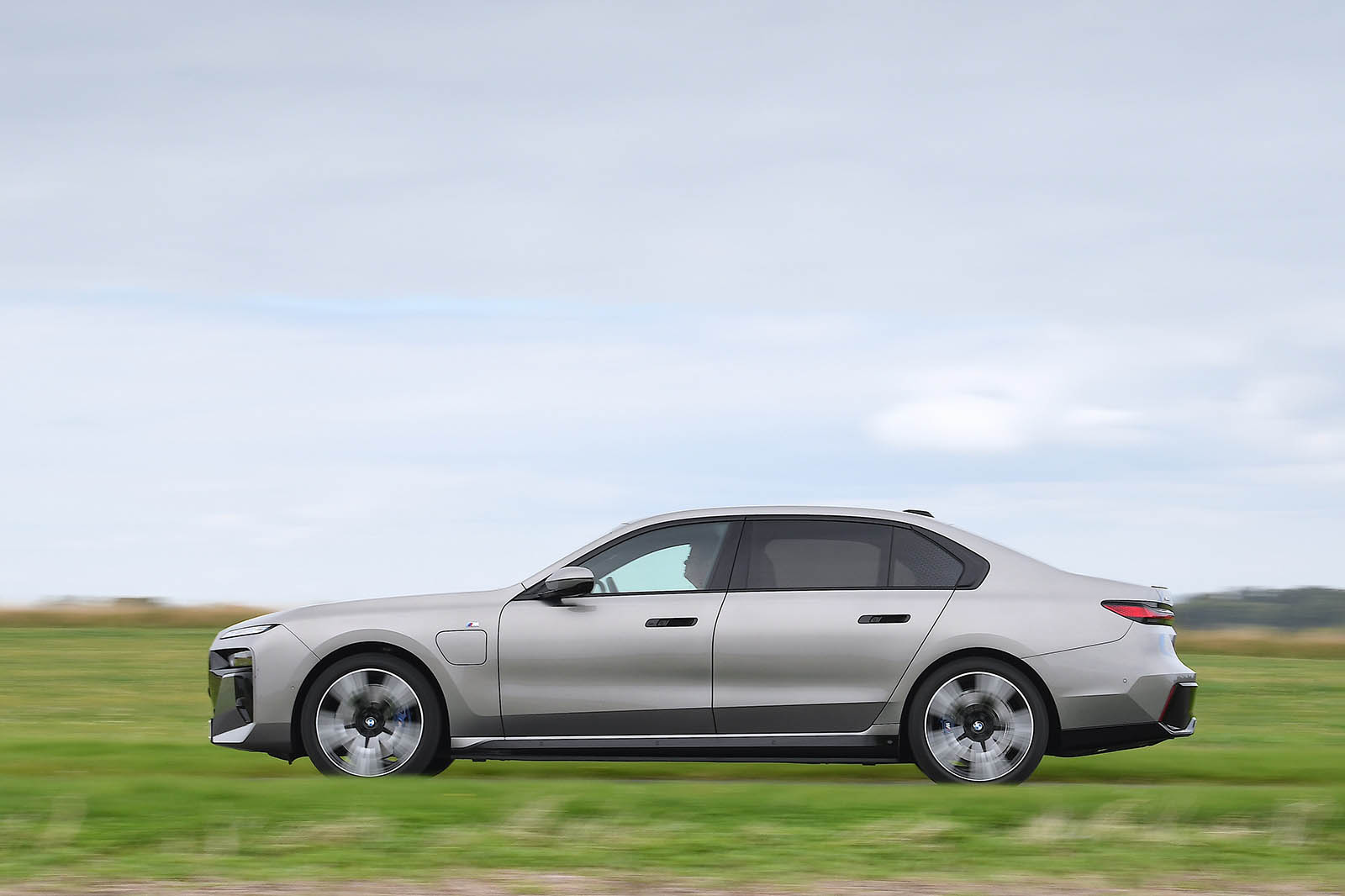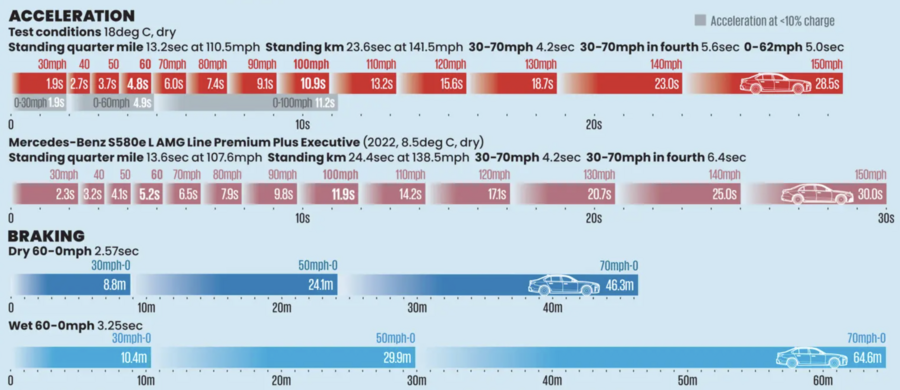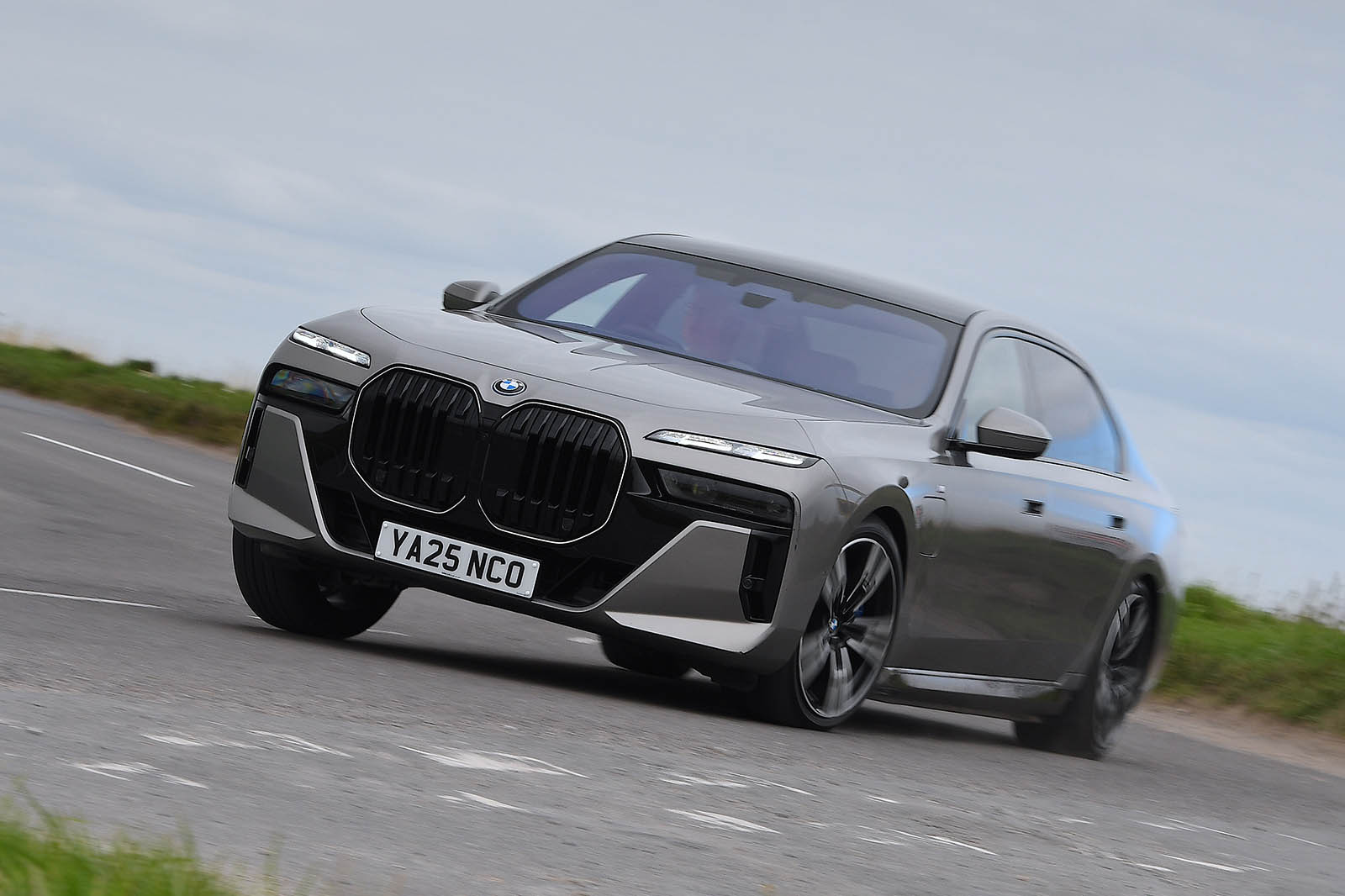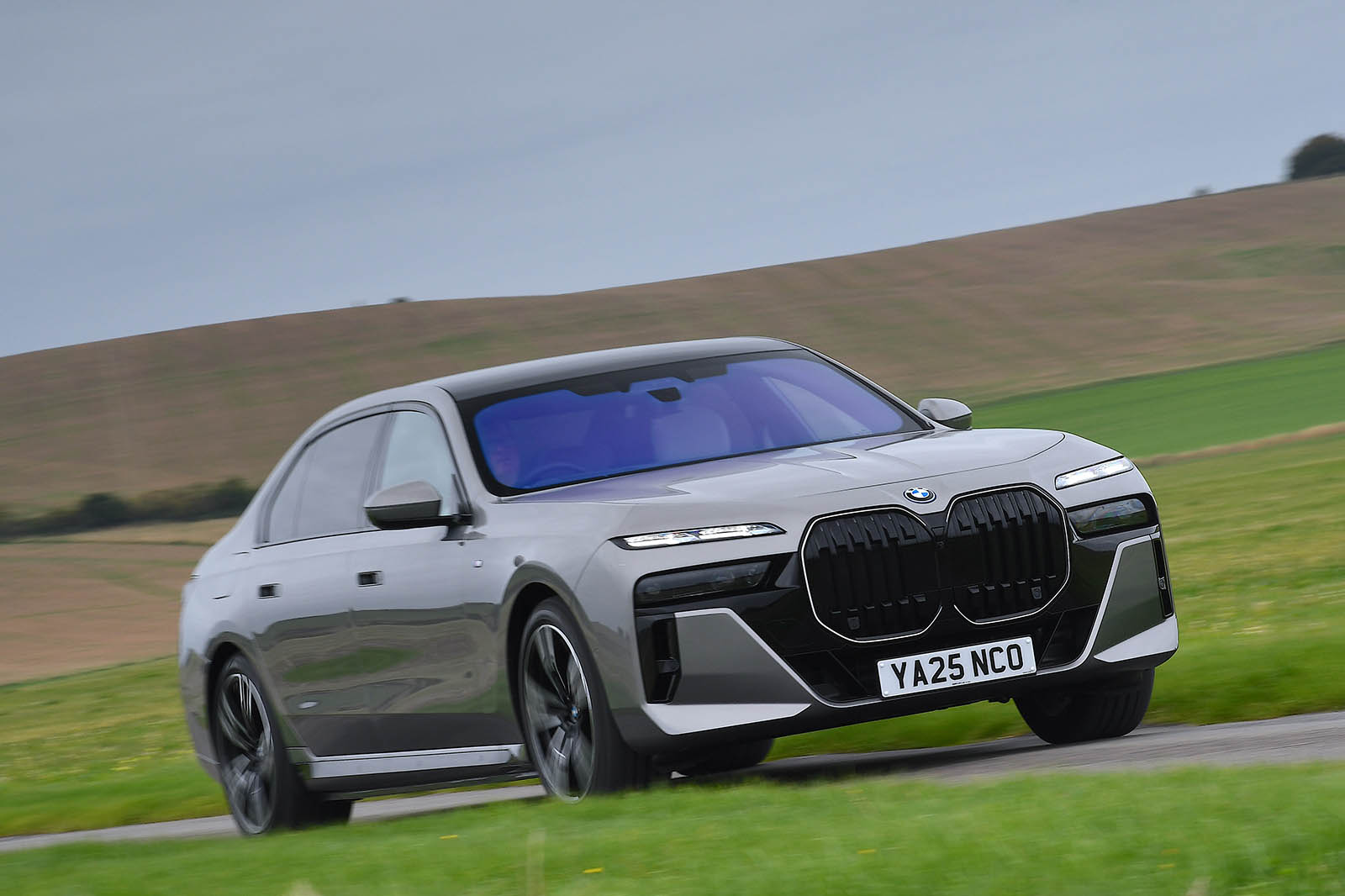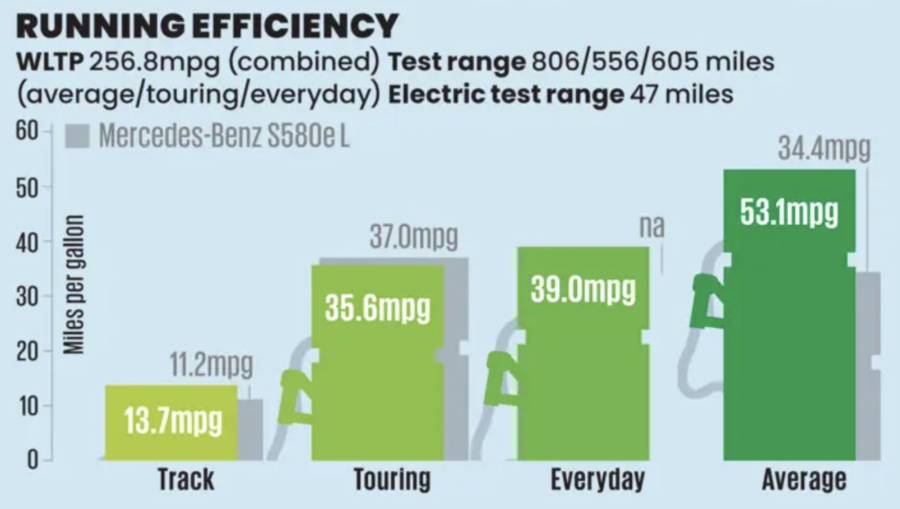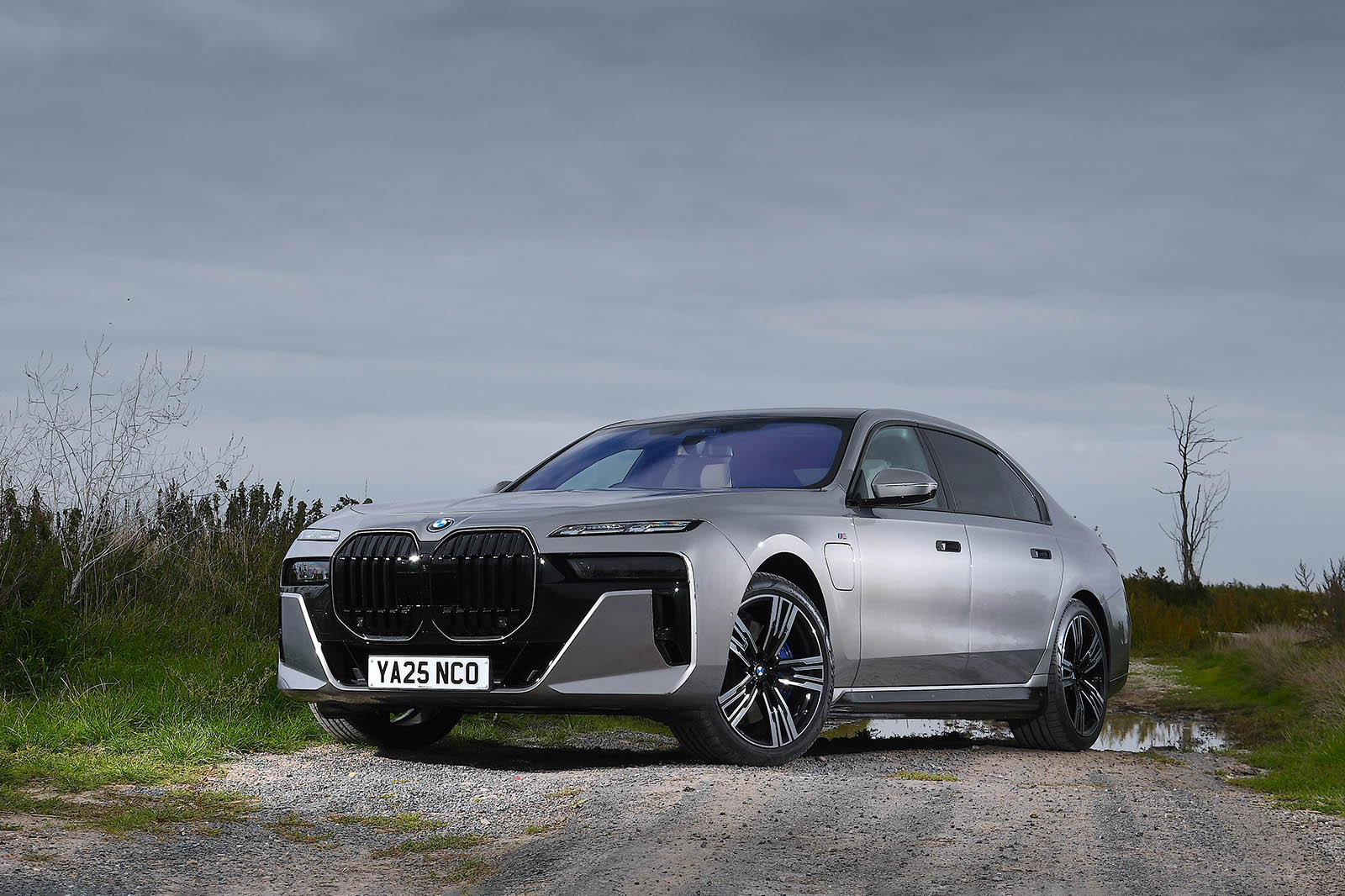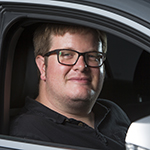Our test car was quite modestly equipped, missing both BMW’s Theatre Screen rear-seat entertainment package and its Executive Lounge seat option (which allows you to extend and incline the cushion on the passenger side, and recline the seatback slightly).
Both were fitted to the i7 we tested in 2023, however; and so we already know that, while it isn’t quite in the league of a Mercedes-Maybach S-Class or Lexus LM for sleeping-seat-style travelling comfort, this car wants for little in the way it can cater to those all-important patrons in the second row.
Even without those options, it conjures a special ambience for those rear-seat travellers. This is especially the case at night, when its ambient-lit audio speakers glow invitingly behind their laser-cut metal grilles, and its fi lament-lit Sky Lounge glass roof gives off futuristic, Tron Legacy vibes.
Each back-row passenger has a smartphone-sized touchscreen in their door console to control entertainment options, lighting and seat heating. The seats themselves don’t adjust for angle or extend in the cushion as standard, but they feel thick, soft and supportive under your backside, and leave you with abundant space and 880mm of rear leg room (Mercedes-Benz S580e L: 860mm, Rolls-Royce Ghost S2 Black Badge: 840mm). The sheer size of this car certainly pays off in that respect.
Up front, there’s a lot more material chintz and digital razzle-dazzle about the 7 Series’ cabin ambience than it ever used to trade on – enough to match Mercedes’ equally flashy S-Class – with the controversial, colour-selectable ‘interaction bar’ lighting element competing hardest for your attention. Quite what it looks like (opinions ranged from a layer of molten kryptonite within a continental shelf, to less complimentary sentiments) can be debated. Less subjectively, we found the way that its surface reflects light during the day problematic, since it also carries key secondary controls that can become hard to spot.
Beneath the glossy attention-grabbing first impression, however, the 7 Series’ cabin has the excellent tactile quality you would expect for the money, and its driving position is excellent, very comfortable and widely adjustable. It’s a fully committed, technologically avant-garde, 21st-century luxury proposition of some ambition, and doesn’t risk selling itself short in any respect.
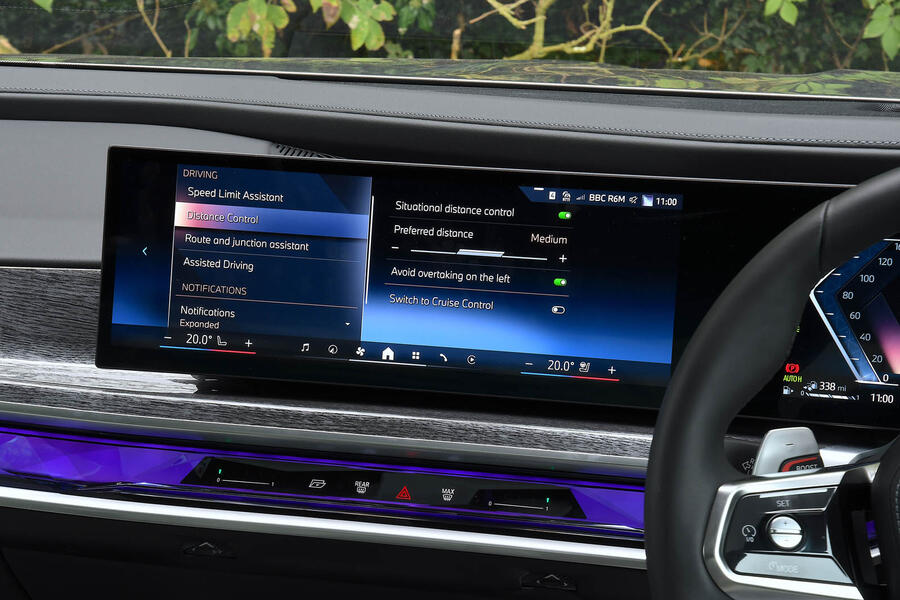
Multimedia - 4.5 stars
Option up BMW’s 31in, roof-mounted Theatre Screen video console, with its Amazon Prime TV integration, and your VIP passengers in the back should want for nothing as regards entertainment on a long journey.
Up front, BMW’s Live Cockpit Professional infotainment system remains one you can operate either via the screen itself, using the iDrive cursor controller, or by voice command. It has good top-level responsiveness and usability, with a primary nav bar at the foot of the 12.3in screen, a customisable home screen and useful physical menu keys on the centre console. Voice control, for us, was a bit hit and miss in recognising key commands.
The system does seem to have a lot of sub-menu screens, so you find yourself hitting ‘home’ a lot – but thanks to those menu shortcut keys, key ADAS functions are easy to access and disable. Some of the system’s screens can be a little needlessly bright and glare-heavy, but overall it’s an impressive, quite sophisticated set-up.
